- luxury villas
- holiday resorts
- holiday cottages
- Italian Islands
- Greece FAQs
- Greek Islands
- Netherlands


Gastronomy Tourism – What is it and why are we so excited about it?
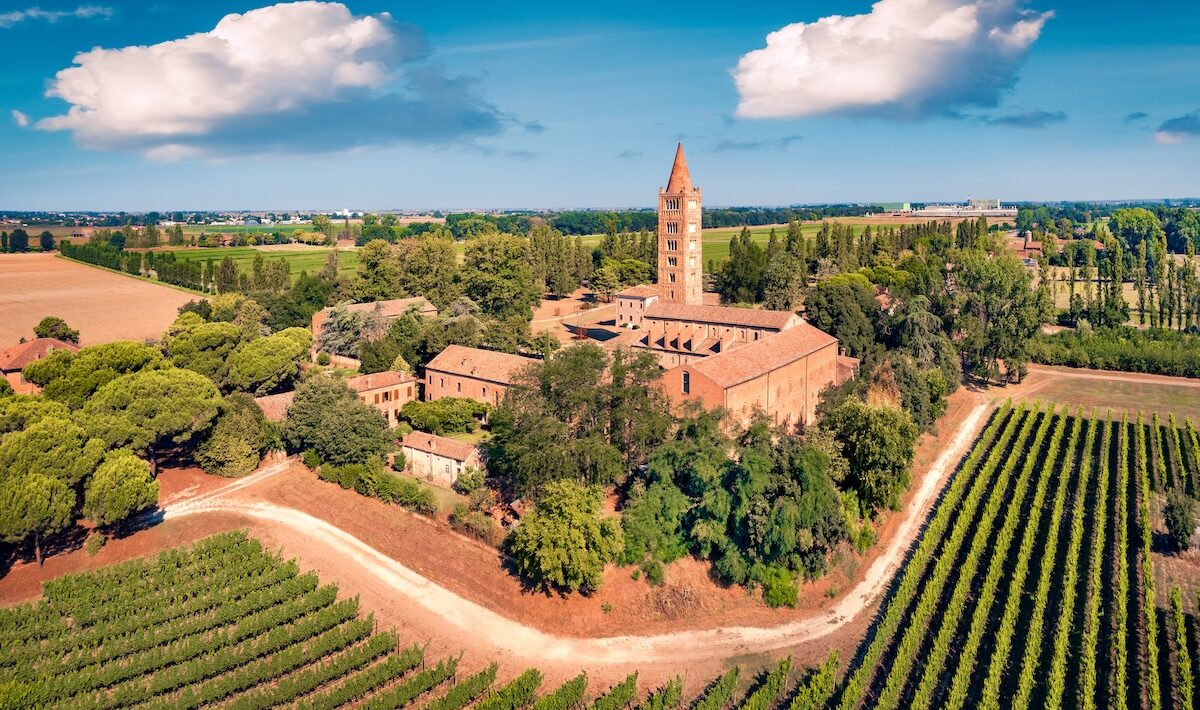
As the clocks change in the UK our thoughts turn to next summer and future holidays. Our combined love of food/drink and travel got us thinking about travelling just to experience food and drink, er experiences. The fancy name is ‘ Gastronomy Tourism ’ or if you want to skip the food and focus on the wine, it would be called’ enotourism.’
What is Gastronomy Tourism?
- What is EnoTourism?
Is Food Tourism a new thing?
- Wine Tasting in Bordeaux, France
- Cooking Up Pasta in Tuscany, Italy
- Tapas Crawl in Barcelona, Spain
- Seafood Journey in Scotland
Examples of Gastronomy Tourism Holidays
Let’s have a quick look at these terms then jump into what it *actually* means for our travel plans into 2024.
Gastronomy tourism, or “food tourism” as it’s often called, is a growing trend where the main attraction is—you guessed it—food and drink. Forget just grabbing a quick bite to eat; this type of holiday is all about diving into the local food scene. Whether it’s wine tasting in France, enjoying a seafood feast in Greece , or taking a cooking class in Italy, food tourism is all about making the most of what’s on your plate and in your glass. Think Rick Stein’s long weekends where the agenda and location are dictated by the food and drink.
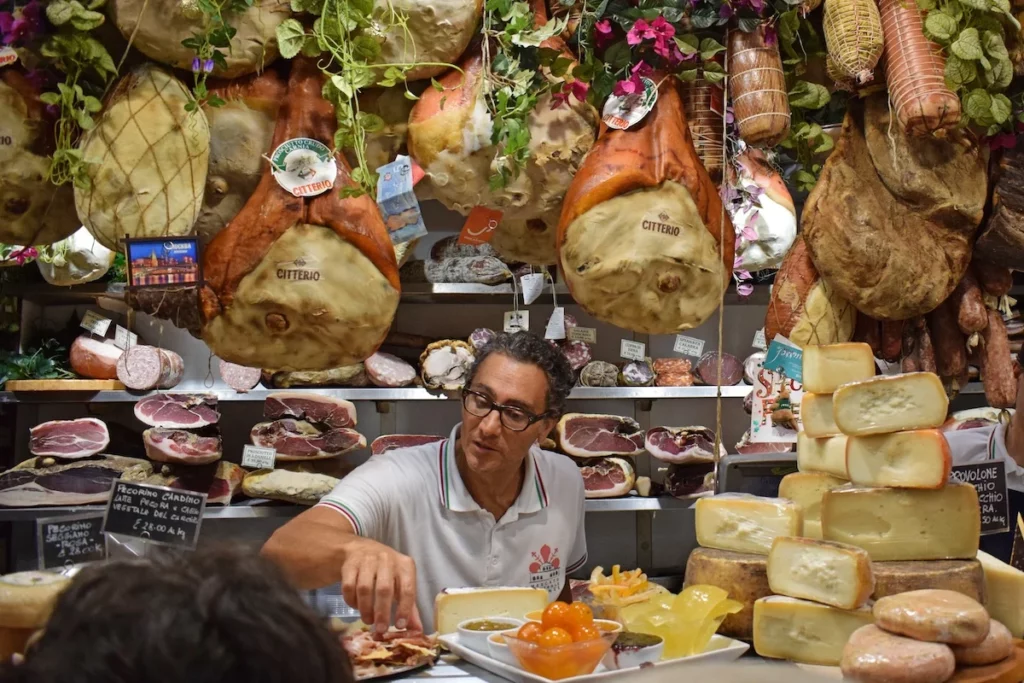
What is Enotourism?
In enotourism, travellers typically visit vineyards and wineries where they can tour the facilities, learn about the winemaking process, and, of course, sample a variety of wines. These trips often include guided tastings led by experts who can explain the different types of grapes, the characteristics of wines from different regions, and the art of pairing wine with food.
Popular destinations for enotourism in Europe include Bordeaux in France, La Rioja in Spain, and Tuscany in Italy. These regions offer not just a wide variety of wines but also stunning landscapes and rich local history, making the trip a multi-sensory experience.
Travelling for food isn’t a new idea. Places like France and Italy have always been hotspots for food lovers. So, what’s different now? Well, food is no longer just a part of the trip; it’s often the main reason people are travelling. Social media has really boosted this trend, with foodie posts inspiring us to try new dishes and visit far-off places. Plus, there’s a bigger focus on local and sustainable food, meaning travellers want to go beyond just eating—they want to know where their food comes from and how it’s made.
1. Wine Tasting in Bordeaux, France
Spend your days visiting famous vineyards and your evenings enjoying top-notch French dishes. A trip to Château Margaux is a good place to start, taste the wine and finish off with a Michelin Starred dinner at Restaurant Soléna in the centre of town. As you might expect from a gastronomy hotspot, the menu is pretty rich – we hear the Blue Lobster (Le Homard Bleu), The Beef (Filet de Boeuf) are good choices. If meat isn’t your thing, you could try Restaurant Akashi, another Michelin Starred restaurant with a great vegetarian menu. We’re eyeing up the Salad of old tomatoes, burrata and pistachios (Salade de tomates anciennes, burrata et pistaches) and the Green asparagus, orange and ginger vinaigrette (Asperges vertes, vinaigrette à l’orange et au gingembre) if it is in season.
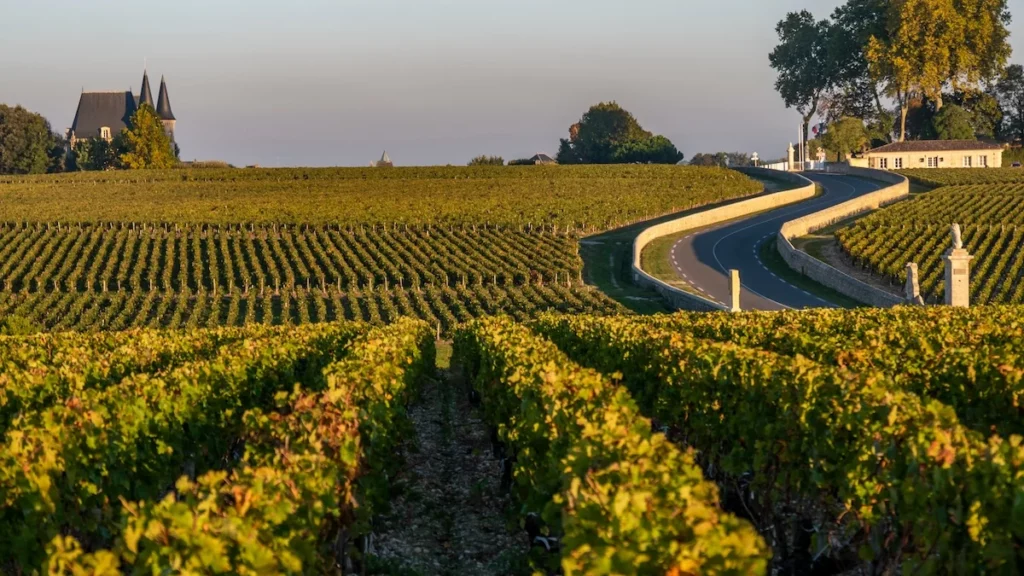
There are 20 Michelin Starred restaurants in Bordeaux so there is plenty to choose from. Many of the major Chateaux also offer accommodation. Château Cordeillan-Bages for example (owned by the same family that own Château Lynch-Bages ) is a converted Catholic Monestary that has been a luxury hotel since the late Eighties.
2. Cooking Up Pasta in Tuscany, Italy
Located in central Italy , Tuscany has long been a foodie destination. For an authentic pasta experience you can check into any number of farmhouses, or wineries to get your hands on some pasta. We hear great things about Tenuta di Spannocchia that offers many different gastronomic experiences including pasta cooking, olive oil tastings and wine tastings. After a busy day ‘trying’ the local wine and pasta you can sleep it off in one of their comfortable rooms or small apartments.
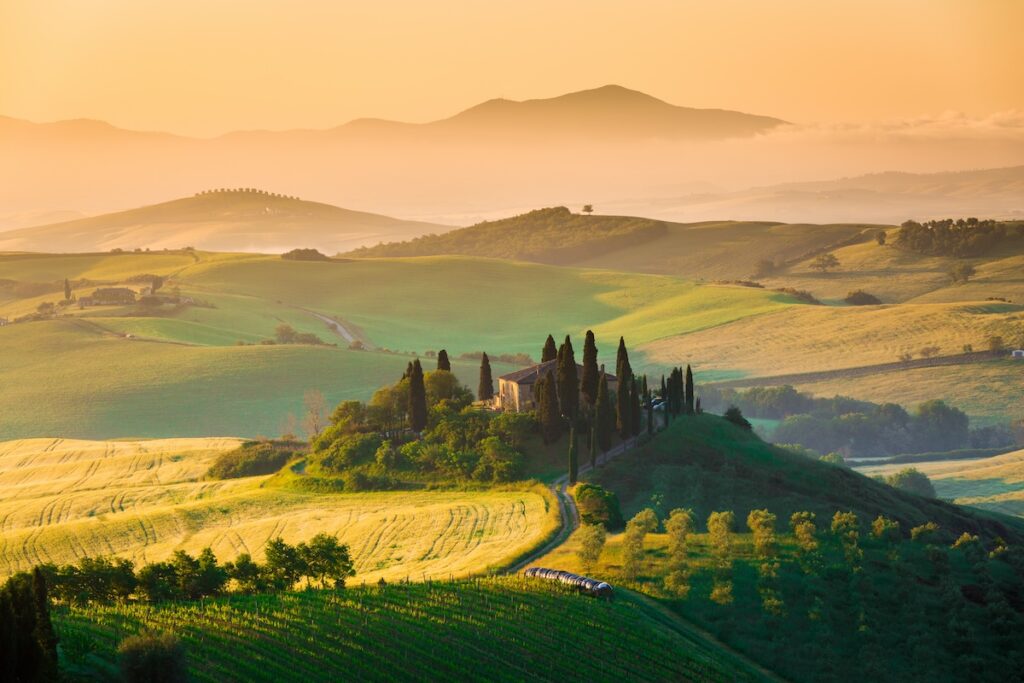
It is worth noting that these ‘farmhouses’ are pretty swanky affairs but if you want to add more wine focus then consider pasta cooking at Fattoria di Montemasso , a family owned winery in the Chianti Classico region. Yes there is a whole region named after a wine (or is it the other way around?)
Note that the Italian word for ‘wineries’ would be ‘vigneto.’ Now you know, vigneto’ – just drop the g so you don’t sound like a tourist! (vee-nyeh-toh.)
When in Tuscany do try the local pasta speciality. Pici are thick, hand-rolled noodles that are typically made with semolina flour and water, often served with a simple tomato or meat sauce.
3. Tapas Crawl in Barcelona, Spain
The Catalan capital offers hundreds of different tapas restaurants giving you endless options for a tapas crawl. At each restaurant you stop for a dish or two before continuing onto the next location. You may start with Patatas bravas, Croquetas de jamón or Gambas al ajillo before moving onto Queso manchego and Padrón peppers before ending with Escalivada (grilled vegetables) or Chorizo al infierno (chorizo sausage in a spicy sauce.) The number of dishes and restaurants.
Whilst the phrase is interchangeable you probably want to find Tapas Bars that are smaller and more intimate than the larger often upscale Tapas restaurants.
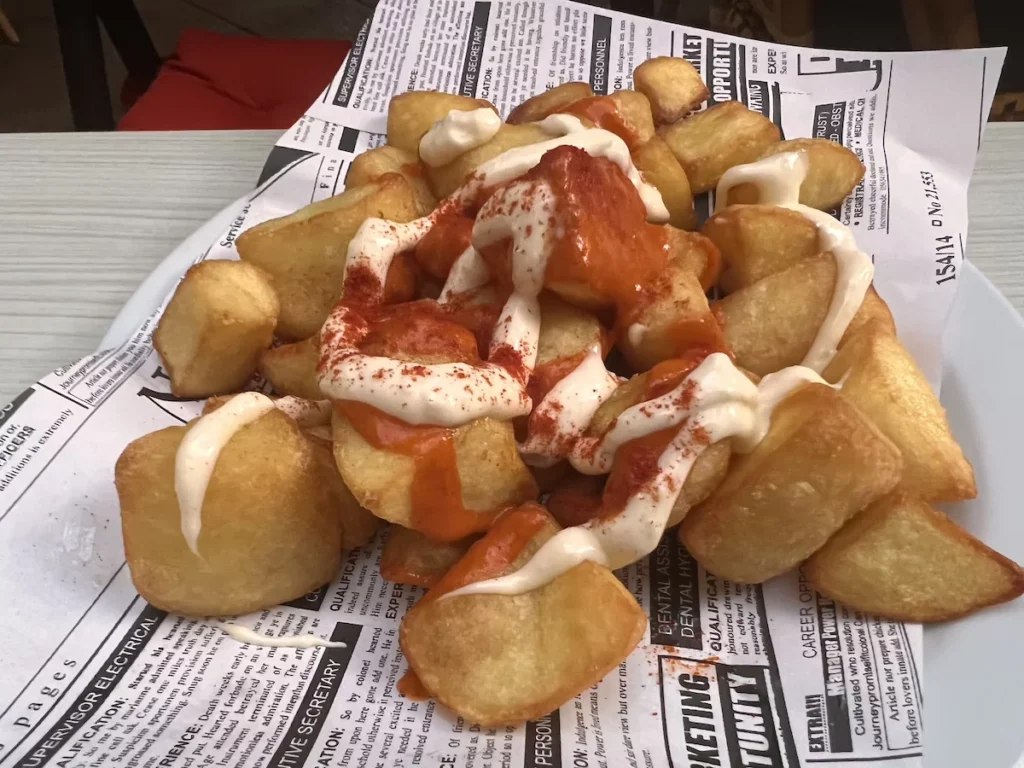
We enjoyed Restaurante Mateo – Tapas y Cerveza on our last trip, tucked away in a little corner of the Gothic Quarter, but there are so many more to try! There is no official route for your gastronomic tour but you can ask your hotel (or Google) for maps and suggestions, or follow your nose and see what you can find!
4. Seafood Journey in Scotland
Take a trip along Scotland’s coast to try some of the freshest seafood around.
There are many places to choose from, including Arbroath for smoked Haddock, Edinburgh for Michelin Starred restaurants like Martin Wishart and the Kitchin or The Isle of Skye for fresh oysters, scallops, and langoustines. Or you could build a full gastronomic holiday in the Argyll and Bute region, home to renowned seafood destinations like Oban, Tarbert, and Lochgilphead.
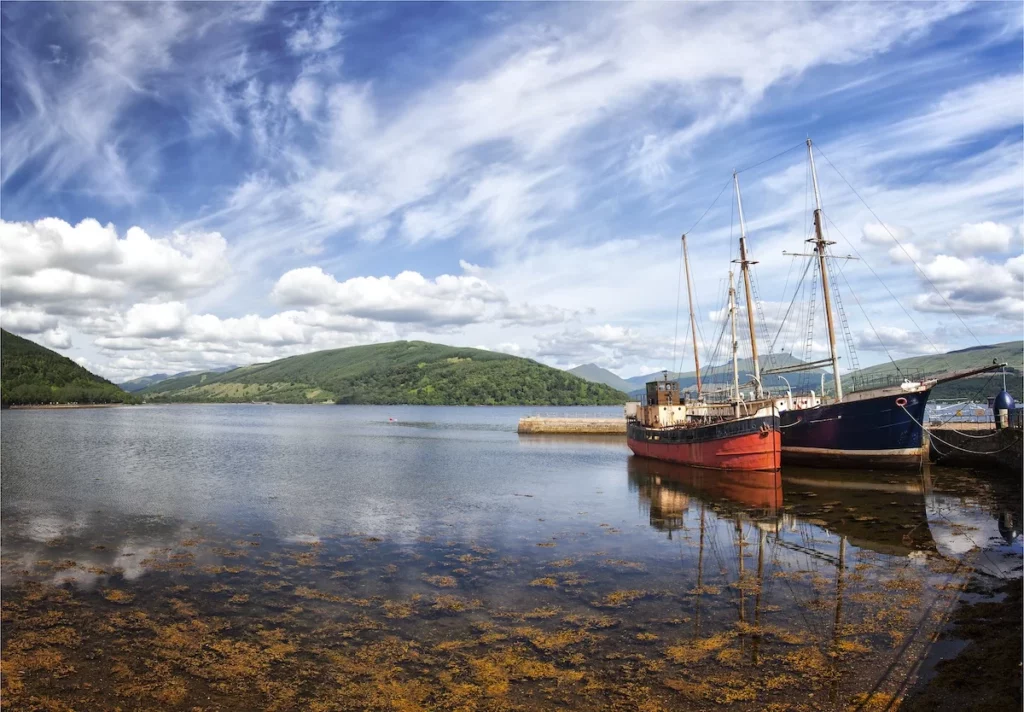
Head to Loch Fyne for Oysters, The Seafood Shack in Oban for fresh seafood, The Argyll bakers for freshly baked goods or Isle of Mull Cheese for… well you can work it out! The Kilchrenan inn near Oban makes the perfect base to explore the local food scene for a few days.
Gastronomy Tourism offers a unique way to get to know a place, through its flavours and food traditions. It’s not just about eating; it’s about experiencing a place with all your senses. As a team of foodies, we are excited about making gastro tourism the focus of our next travels, So, if you’re planning your next holiday and you’re a bit of a foodie, why not make food the main event?
Jay is the founder of Wine Travel & Song and contributor to Virtual Wanderlust. A published writer and photographer, Jay is an extensive traveller, a passionate music fan but an average cook. He loves the Eagles , U2 , Genesis and Pink Floyd. A trusted Google Local Guide & TripAdvisor Superstar , Jay's travel photos have been seen over 26 million times and counting!
Related Posts More From Author
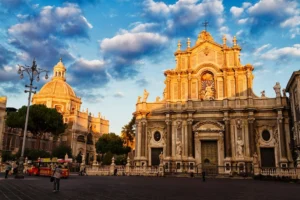
Catania Travel Guide 2024

Agrigento Travel Guide 2024
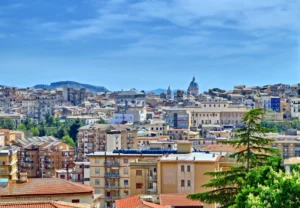
Caltanissetta Travel Guide 2024

Movies & Shows set in Sicily
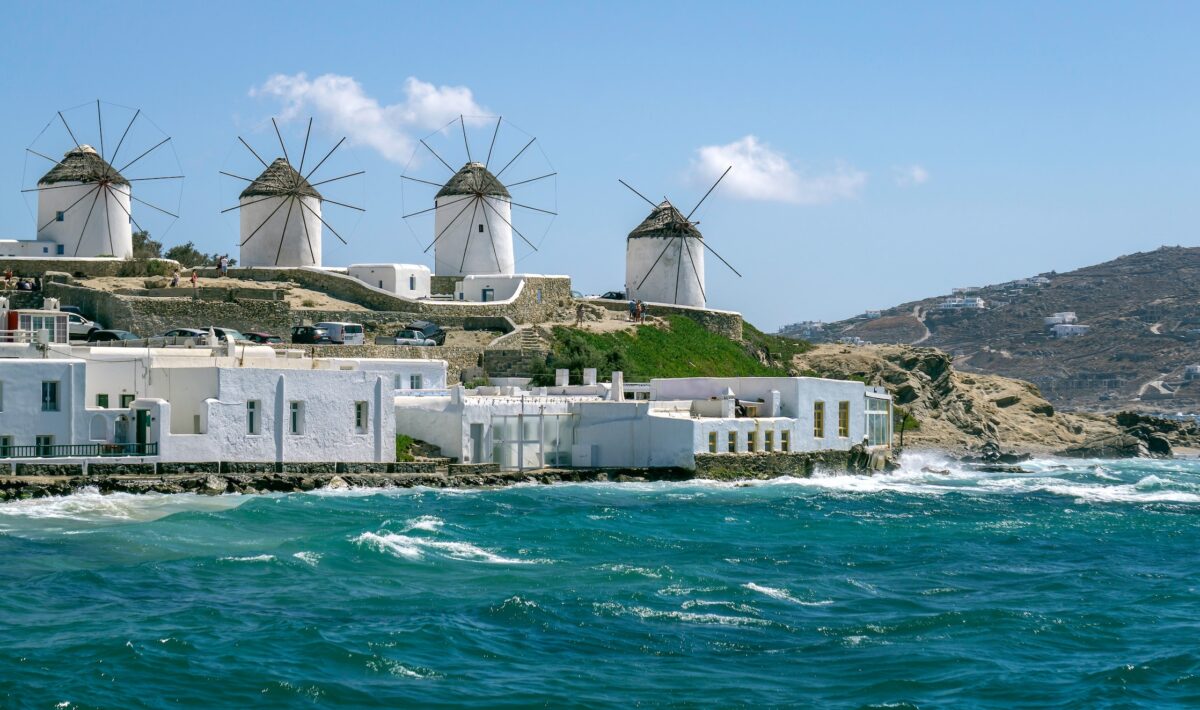
Your Ultimate Mykonos Holidays Guide
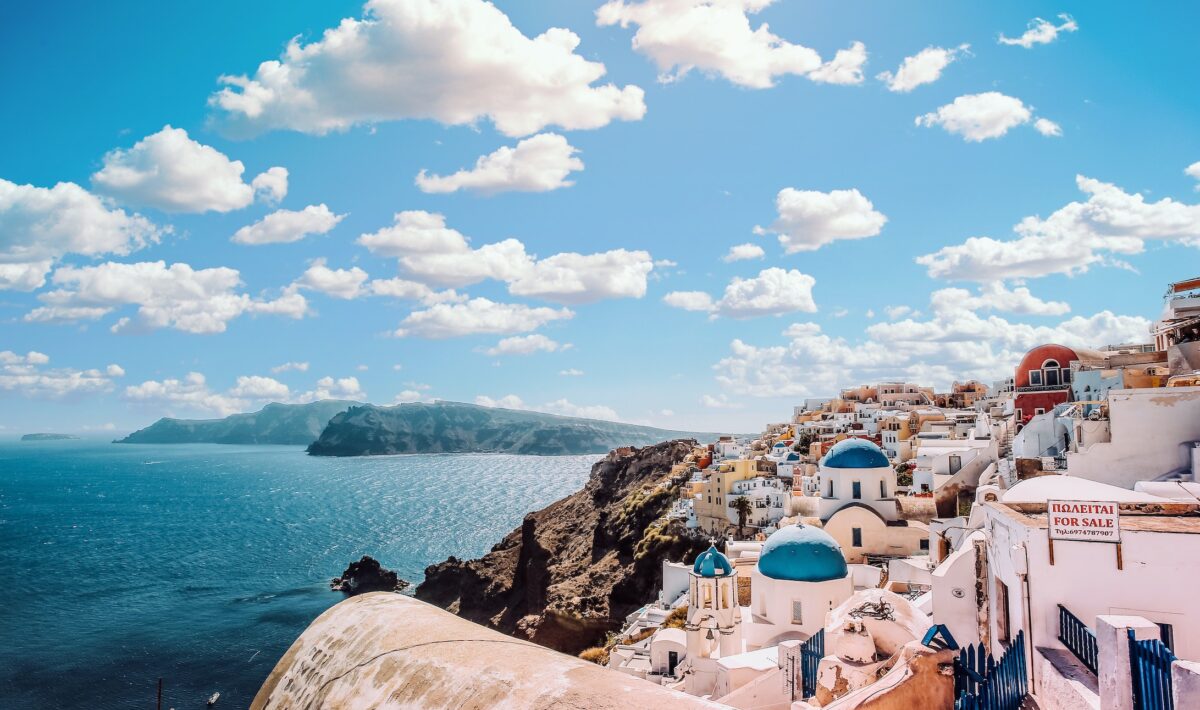
Your Ultimate Santorini Holidays Guide
Wine Tourism and Gastronomy
Cite this chapter.

- Olivier Etcheverria 4
1812 Accesses
4 Citations
Gastronomy is today playing an increasingly significant role in wine tourism. It is in effect a complement to both tangible factors, such as cheeses, cold-meats, and desserts and intangible factors via verbal communication around food and drink which accompanies recreation projects and the tourism experience, an infrequent activity in an unfamiliar environment. More importantly, food is often an influential and attractive element which helps wine tourism. The interpenetration of wine tourism and gastronomy sometimes leads one to think about the existence of “gourmet tourism” in which drinking and eating are equally valued from a tourist’s point of view allowing them to discover something different , somewhere different through both taste and greed. As such, “gourmet tourism” developed in Santorini and, based on the wine-making heritage, gives an equal value to grapes, cherry tomatoes, white eggplants, beans, capers, honey etc. so that these food crops appear to have been co-produced by both the permanent residents as well as by the temporary residents on the island, the tourists.
This is a preview of subscription content, log in via an institution to check access.
Access this chapter
Subscribe and save.
- Get 10 units per month
- Download Article/Chapter or eBook
- 1 Unit = 1 Article or 1 Chapter
- Cancel anytime
- Available as PDF
- Read on any device
- Instant download
- Own it forever
- Available as EPUB and PDF
- Compact, lightweight edition
- Dispatched in 3 to 5 business days
- Free shipping worldwide - see info
- Durable hardcover edition
Tax calculation will be finalised at checkout
Purchases are for personal use only
Institutional subscriptions
Similar content being viewed by others

Wine Tourism in South Africa: Valued Attributes and Their Role as Memorable Enticements
Wine plus tourism offers: it is not all about wine—wine tourism in germany.

Local Gastronomy: A Tasty Tourist Attraction in Turkey
Clergeau, C., & Etcheverria, O. (2013). Gastronomie et développement local. Mondes du Tourisme (7).
Google Scholar
Clergeau, C., & Etcheverria, O. (2013). La mise en tourisme et le développement local par la création d’une atmosphère gastronomique. Analyse à partir du cas de Vonnas. In C. Clergeau & O. Etcheverria (Eds.), Gastronomie et développement local (Vol 7, pp. 52–67) Mondes du Tourisme.
Csergo, J., & Lemasson, J. -P. (2008). Voyages en gastronomies. L’invention des capitales et des régions gourmandes, Editions Autrement, Collection Mutations.
Etcheverria, O., & Bras, M. (2005). Existe-t-il un goût de l’Aubrac in Géographie des saveurs. Revue Géographie et Cultures L’Harmattan, 50 , 63–76.
Filser, M. (2002). Le marketing de la production d’expérience: Statut théorique et implications managériales. Décisions Marketing, 28 , 13–22.
Hazebrook, J. -M. (2009). De l’espace touristique à la destination touristique, un “territoire” qui se projette. In J. -P. Lemasson, & Ph. Violier (Eds.), Destinations et territoire. Volume 1: Coprésences à l’oeuvre, (pp. 7–25) Presses Universitaires du Québec, Editions Téoros.
Holbrook, M. B., & Hirschman, E. C. (1982). The experiential expects of consumption: Consumer fantasies, feeling and fun. Journal of Consumer Research, 22 , 1–16.
Pine, B. J. & Gilmore, J. H. (1998). Welcome to the experience economy. Harvard Business Review .
Pitte, J.-R. (1993). Des productions de qualité dans un paysage de qualité: un défi pour le monde rural français. L’aménagement Foncier Agricole et Rural, 79 , 19–22.
Van Der Yeught, C. (2008). Les apports du développement durable au management stratégique des destinations touristiques, Conférence annuelle de l’Association internationale de management stratégique (AIMS), Nice.
Violier, Ph. (2009). Proposition pour un modèle d’analyse des lieux touristiques. In J. -P. Lemasson & Ph. Violier (Eds.), Destinations et territoire. Volume 1: Coprésences à l’oeuvre (pp. 26–37) Presses Universitaires du Québec, Editions Téoros.
Yin, R. K. (2003). Case study research: Design and methods . Thousand Oaks, CA: Sage Inc.
Download references
Author information
Authors and affiliations.
Université d’Angers, Angers, France
Olivier Etcheverria
You can also search for this author in PubMed Google Scholar
Corresponding author
Correspondence to Olivier Etcheverria .
Editor information
Editors and affiliations.
Department of Business Administration, Universitat Politècnica de València Organización de Empresas, Valencia, Spain
Marta Peris-Ortiz
Business Organization and Marketing Faculty of Business Science & Tourism, University of Vigo Campus of Ourense, Ourense, Spain
María de la Cruz Del Río Rama
Department of Business Administration, Universitat Politècnica de València, Valencia, Spain
Carlos Rueda-Armengot
Rights and permissions
Reprints and permissions
Copyright information
© 2016 Springer International Publishing Switzerland
About this chapter
Etcheverria, O. (2016). Wine Tourism and Gastronomy. In: Peris-Ortiz, M., Del Río Rama, M., Rueda-Armengot, C. (eds) Wine and Tourism. Springer, Cham. https://doi.org/10.1007/978-3-319-18857-7_12
Download citation
DOI : https://doi.org/10.1007/978-3-319-18857-7_12
Publisher Name : Springer, Cham
Print ISBN : 978-3-319-18856-0
Online ISBN : 978-3-319-18857-7
eBook Packages : Business and Management Business and Management (R0)
Share this chapter
Anyone you share the following link with will be able to read this content:
Sorry, a shareable link is not currently available for this article.
Provided by the Springer Nature SharedIt content-sharing initiative
- Publish with us
Policies and ethics
- Find a journal
- Track your research

UNIT 1 – Wine tourism: definition, opportunities, implications and strategies
- 4. AT THE MARKETPLACE
- The opportunities of experience-based tourism in wine and food sectors
- UNIT 1 – Wine tourism:…
A NEW TYPOLOGY OF TOURISM
In recent years, wine tourism has been on the rise and represents a robust segment of tourism, because tourists search for more authentic experiences [See UNIT 2 – Wine tourism demand trends ] , travelling to wine-producing countries and visiting wine regions. The second main reason of this success is related to the fact that wine tourism can include other tourism segments, such as cultural, heritage and gastronomy tourism, appealing to more than just wine enthusiasts or wine experts and thus, attracts a large number of visitors (Woldarsky & Geny-Denis, 2019).
Starting from these premises, food and wine tourism represent a new typology of tourism, within the “tourism taste”, that could be indicated as “territorial food and drink tourism” (Hall et al., 2003; Lemmi & Siena Tangheroni, 2015).
Holiday motivation and food attraction (Hall et al ., 2003; Lemmi & Siena Tangheroni, 2015).
WINE TOURISM POTENTIALS
Offering wine tourism goes beyond simply meeting a demand. Wine tourism offers huge potential, creating value both for the territory and wine producers.
- For the territory, wine tourism gives the opportunity to generate wealth in a specific place, promoting its heritage too
- Considering the winery perspective the direct and indireret gains associated to a successful wine tourism business are mainly 8 (Woldarsky & Geny-Denis, 2019)
DEFINITION AND IMPLICATIONS
Wine tourism can be defined as a visitation to vineyards, wineries, wine festivals and wine shows for which grape wine tasting and/or experiencing the attributes of a grape wine region are the prime motivating factor for visitors ( Hall and Macionis, 1996)
It includes a visit to the company, the desire to know the productive process, traditions, history and culture of the wine but also of the territory, the region through images, economic, social and aesthetic values, cultural and natural elements, historical signs rather than consumerism.
Wine tourism is:
- A service experience
- A complex experience, involving the whole terroir ’s attractions
- Related to the wine tourist’s different motivations and profiles
- Nowadays managed through electronic marketing tools
- A tool for regional development (e.g. wine routes)
According to this definition, there are many implications related to wine tourism.
WINE TOURISM TYPOLOGIES
From the offer perspective, wine tourism can be divided in 4 main categories (Karlsson, 2017):
- “Open Door” wine tourism, consisting in opening the cellar’s doors and receiving people for wine tastings and cellar visits
Let’s see the case of Cantine Aperte , the most important wine tourism event in Italy, created in 1993 by the association Movimento Turismo del Vino : every year, in the last week-end of May, the members wineries open their doors to personally meet people. During the years, Cantine Aperte has become a way to travel and discover Italian wine territories, which has seen an increasing number of tourists, wine wonderers and wine lovers visiting wineries from year to year hoping for a unique experience ( www.movimentoturismovino.it )
- “Edutainment” wine tourism, consisting in something more complex and organized than the simple visit to the cellar. The word “edutainment” means in fact a mix between education and entertainment. Some example of “edutainment” wine tourism are: blending session, harvesting workshop, vineyard nature walks, cooking class….
- “Disneyland” wine tourism, consisting in big budget projects, often with mixed contents also including contens not directly related to wine. This is the case of special restaurants or hotels, wine museums, etc
- “Eventification” wine tourism, consisting in one-time events focused on wine. This is the case of wine festivals, gastro-walks, village harvest festival, etc
WHO IS THE WINE TOURIST? (1/3)
Considering the demand perspective, according to Per Karlsson (2017), there are different kinds of wine tourists:
- Wine geek: he wants to know everything about the company, its wines, product processes, etc; for this kind of tourist, wine is the unique purpose of his travel
- Gastro-tourist: this kind of tourist is interested in gastronomy in general; for him wine is one of the reason of his trip
- Passing-by casual tourist: he is not manly interested in wine, but if he visits a wine region he usually decides to visits almost a winery
WHO IS THE WINE TOURIST? (2/3)
According to an Australian research who tried to give an overall general profile of the wine tourist (Chartersa & Ali-Knightb,2002), wine tourists are usually ‘‘couples with no children and those with higher education and incomes in professional occupations,’’ (South Australian Tourism Commission, 1997) and can be divided into 4 main categories:
- Wine lover: he has a comprehensive grounding in wine education, through attending wine and/or tasting courses, reading wine books, watching tv programs about wine, etc. Their motivation as wine tourists is also clearly defined. They are more likely to want to buy wine, to want to learn about wine, and to want to taste wine at the winery
- Connoisseur: he shares all the lifestyle characteristics of the ‘Wine Lovers’ but he has an even more keen thirst for knowledge
- Wine interested: he attends tastings and visits wineries, but he has not any particular experience in wine education. He is interest in learning about storing and ageing wine, but much less concerned with food and wine links
- Wine novice: he attends tastings and visits wineries, but his motivation in wine sector is less focused
WHO IS THE WINE TOURIST? (3/3)
According to Alebaki & Iakovidou (2011), about the wine tourist profile there is a general perspective that “ the ideal wine tourist is male, professional and middle –aged, because they will spend most” (Charters & Carlsen, 2006). However, although younger wine tourists have limited knowledge about wine compared to older ones, they may be more important in the long term. Thus, greater attention needs to be paid, because high satisfaction from the whole wine tourism experience can help in terms to bring them back for return visits (Roberts & Sparks, 2006), create a demand in the long term for specific brands, and built customer loyalty towards individual wineries and their wines (Getz, 2000).
WHICH ARE THE MAIN ACTIVITIES TO DEAL TO PROMOTE WINE TOURISM?
As in many other contexts there is not a single recipe valid for every winery. Strategies and activities depend on the specific projects and location.
In the definition of a wine tourism project, wineries should keep in mind 4 keywords:
Collaboration
If you are all alone no one will be interested in your activity, but if you start collaborating with other wineries, but also with restaurants, museums, hotels, tourist offices, wine shops, etc., the better it will work (Hall et al.,1997; Østrup Backe, 2013); let’s try to create a flexible network with all the stakeholders operating in tourism sector in the area you are located.
Storytelling
Stories are able to appeal both to the logical and emotional cores, meaning they tend to be more memorable than other marketing tools (Pera, 2017). It is not important having a beautiful cellar or a perfectly organised tasting room; visitors will expect that wineries share their stories with them; let’s tell to visitor authentic, clear and memorable stories about your work, your winery and your products. This will be your uniqueness element!
Wine tourism is all about giving people a memorable experience. Experience based tourism, in fact, allows tourists to be fully involved in the visit and to be a leading actor in the choice. It is also able to start up a process, gradually increasing the tourist’s awareness to become an active tourist (Hall et al., 2007; Lemmi & Siena Tangheroni, 2015). Lett’s focus your activity in giving to visitors something that will make them remember the winery and the wines and that will make them talk about it.
Authenticity
The trend to the local and the search for authenticity in food tourism are becoming increasingly important. Tourists want to be different and want to experience places and their food and drinks the same way locals do; (Sims, 2009; Østrup Backe, 2013;). Let’s offer to visitors an authentic experience of your winery and products.

Wine tourism: a journey through the world’s wines and vineyards
Some people travel to discover new cultures and practice languages. Others like to venture out to admire landscapes and…drink wine! This is the proposal of wine tourism: to allow the traveler to make a true immersion in the history, aroma, and flavors of viticulture.
For some decades now, more and more tourists have taken the road and embarked on expeditions to rural regions to learn more about wine culture. The proposal is to visit wineries, do wine tastings, participate in harvests, and (literally) embark on a journey to the world of wines. A toast to that!
What is wine tourism?
In a nutshell, wine tourism is a type of food tourism aimed at getting to know and appreciate the universe of wine. The routes and tours are focused on a single objective: get to know regions dedicated to wine production and taste their wines.
This type of food trip is designed for people looking to delve into the history, traditions, and culture of wine. Tourists can participate in wine tastings, take guided tours through the wineries and vineyards, visit museums…
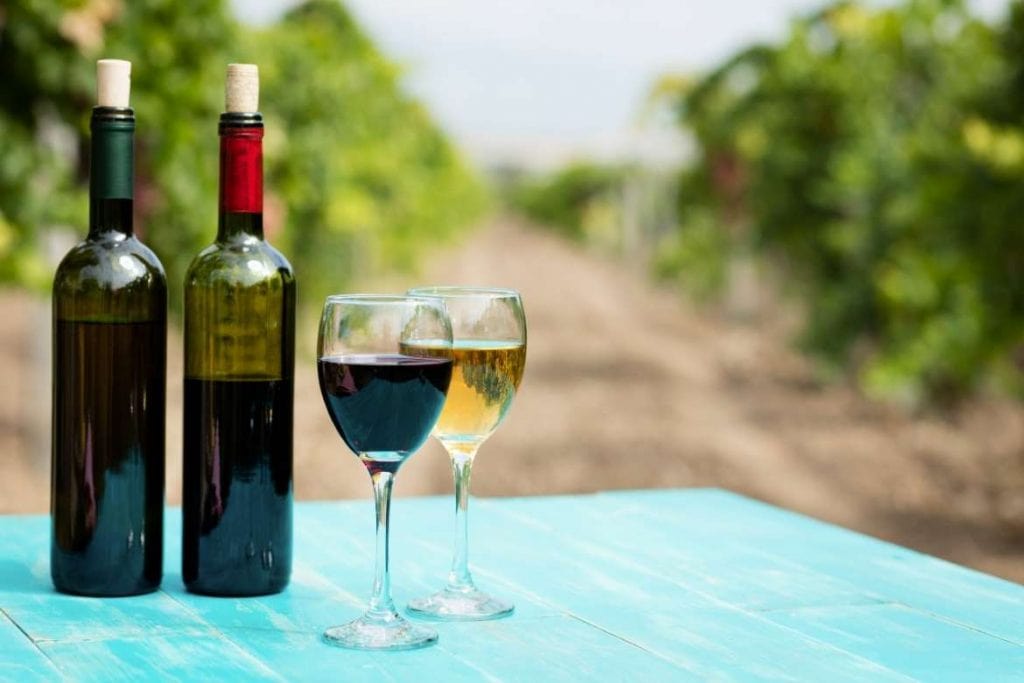
Why do wine tourism
Visiting wine-producing regions is an authentic way to discover a country’s rural and inland destinations. Wineries open doors for people to immerse themselves in regional culture and learn more about wine and biodiversity and how the locals relate to their traditions and history.
Wine tourism also acts as a lever for the local economy, with the increase in tourism offers, small towns in the interior gain new business and job creation possibilities. The presence of travelers throughout the year is a guarantee of sustenance for the community and local entrepreneurs.
Who is wine tourism for?
Wine tourism is democratic and appeals to all kinds of tourists: from sommeliers to laymen on the subject. To travel to a wine-producing region, you don’t need to be an expert. Just bring your curiosity about their traditions and enjoy the aromas and flavors of the beverage. So, what type of wine tourist are you?
For wine lovers and experts, this type of trip is a full plate. It is the opportunity to immerse yourself (even more) in the wine universe and make the most of each experience. You can set up entire itineraries focused on tastings and visits to wineries, with the possibility of private tours and nice chats with the estates’ owners, winemakers, and agronomists.
Those interested in wine and gastronomy also take advantage (and a lot!) of wine tourism routes. It’s a chance to explore a destination through its flavors and find hidden gems. Even if the wine is not the main focus of your whole trip, you will learn a lot about the region’s interiors, their way of living, and the best part, return home with good labels in your luggage.
For the more curious and adventurous tourists, wine tours enhance your itinerary with different and unique experiences. Even if you are not a connoisseur of the world of wine, it is worth setting aside a few days to visit wineries, stroll through vineyards, learn about food pairing, and, who knows, discover a new hobby.
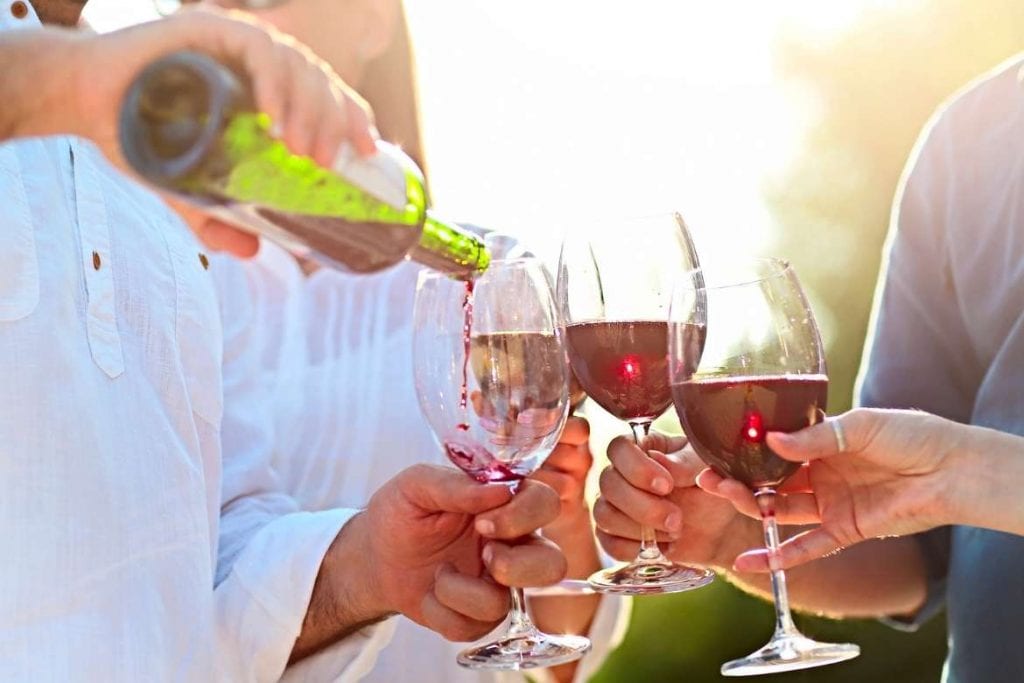
Examples of wine tourism experiences
There are many ways to explore and discover a wine-producing region. Some experiences, such as tasting sessions and visits to wineries, are classic and almost mandatory. But the possibilities go much further. Investing in exclusive and customized tours is an interesting way to get to know all the stages of wine production, from planting the grapes to selling the wine. These wine tourism experiences can include:
Guided tours at wineries and wine cellars
These are part of the basics of any trip to a wine-producing region. Getting to know up close how a winery works is the first step to diving into this universe. The vast majority of properties offer guided tours in their facilities, where an instructor leads the tourists and explains the production step by step, from planting to bottling and telling the backstage of the wine world.
Wine Museums
Some regions have specific places to share the history of their wine production. Expect to find permanent and/or itinerant exhibitions that tell more about the traditions and production methods.
Immersive experiences
During the grape harvest season (vintage), some estates offer tourists the chance to participate in and revive old traditions. Travelers can get their hands dirty, dance to regional music, tread the grape, and pick fruit from the vineyard.

Hungarian Wine Tour to Villány with lunch
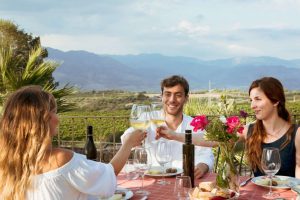
Mount Etna Food and Wine Tasting Tour

Hungarian Wine Tour to Somló & Balaton with lunch

La Rioja Winery with Tasting and Traditional Lunch
Tasting sessions.
This is the opportunity to effectively taste local wines. In sequential steps, different labels are served in small quantities. In some cases, tastings are already included in the guided tours.
Grape festivals
These are events in celebration of the wine culture. In most cases, they offer programs that include musical performances, workshops, and label sales. Before boarding, it is a good idea to check the local festivities calendar.
Workshops and courses
Some wineries offer classes on terroir, cultivation, and harmonization for those who want to go even deeper into the world of wine. Usually, it is necessary to plan and register in advance to participate.
Gastronomic experiences
In some wineries, you don’t need to leave the property to have a complete gastronomic experience. Before scheduling your visit, check the possibility to sample tasting menus, do picnics, or participate in cooking classes – all harmonized with house labels, of course.

What are Wine Routes
Some destinations have prepared themselves to receive tourists interested in knowing more about the universe of viticulture. For this, they organize the so-called “Wine Routes.” The Wine Routes are defined routes in which visitors can visit wineries, vineyards, restaurants, and historical sites – all within a specific region to promote immersion in the world of wine. Countries like Italy, France, Portugal, South Africa, and Chile are a reference in receiving this type of visitor.
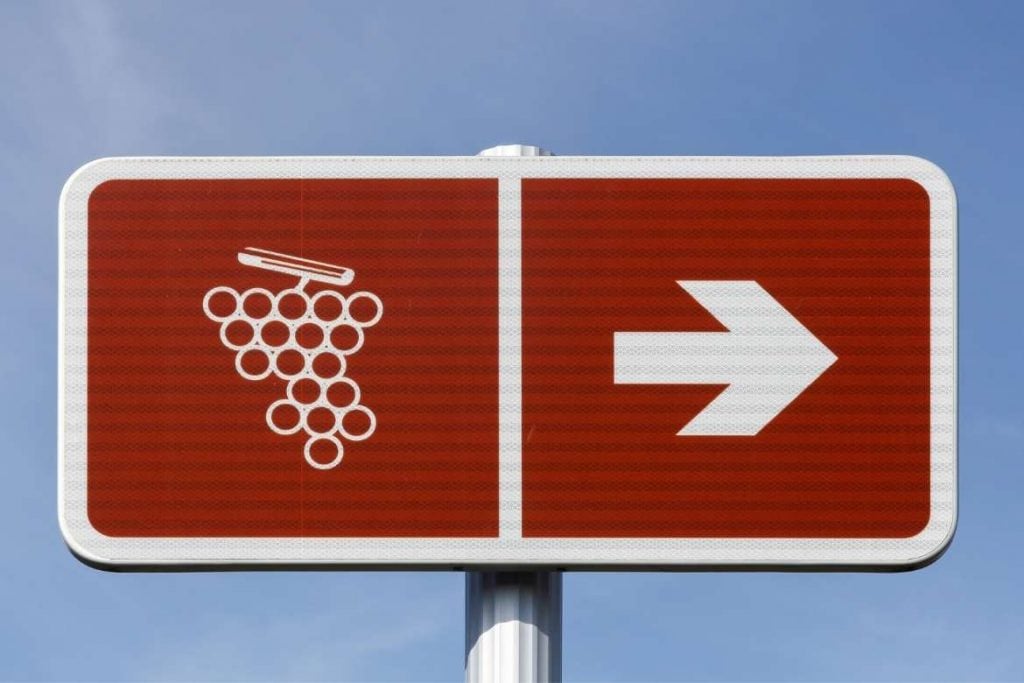
In the “Old World,” which is in European wine-producing countries, tourists have the opportunity to learn more about the history of wine, ancient traditions, and production methods. All passed down from generation to generation over many years with great prominence in the terroir and microregions.
In the “New World,” however, in non-European countries, cultivation is more recent, and so is its history. Many regions of the New World were introduced to the cultivation of wine mostly by Europeans, which is another reason for calling them the ‘New World.’ In these regions, the type of grapes used in production, the focus on technology, and more flexible winemaking practices stand out. This does not mean that Old World countries do not work with cutting-edge techniques, nor does it mean that traditional and artisanal methods are absent in New World countries.
Some of the most famous wine routes in the world are:
- Bordeaux and Champagne, France
- Rioja, Spain
- Douro and Alentejo, Portugal
- Tuscany and Piedmont, Italy
- Eger, Hungary
- Mosel-Saar-Ruwer, Rheinhessen and Pfalz, Germany
- Kakheti, Georgia
- Santorini, Greece
- Mendoza and Salta, Argentina
- Yarra and Barrosa, Australia
- Casablanca, Colchagua and Maipo, Chile
- Stellenbosch and Franschhoek, South Africa
- Napa Valley, United States
- Vinhedos Valley, Gaúcha Mountain Range, Brazil
Also read: The best regions for wine tourism in the world
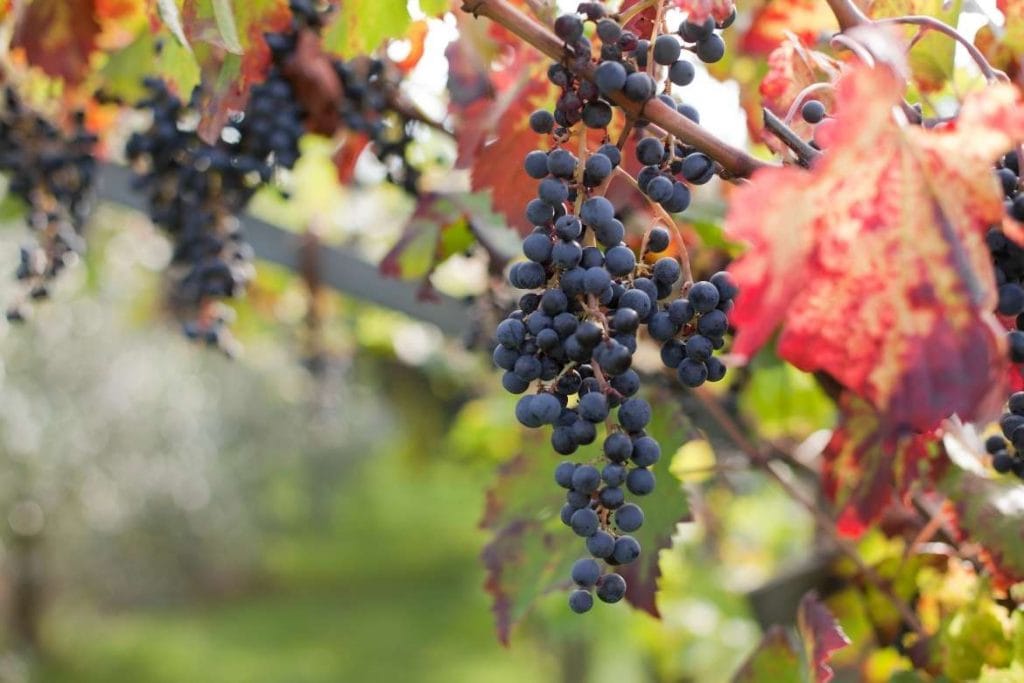
- .wp-block-kadence-advancedheading mark{background:transparent;border-style:solid;border-width:0}.wp-block-kadence-advancedheading mark.kt-highlight{color:#f76a0c;}.kb-adv-heading-icon{display: inline-flex;justify-content: center;align-items: center;}.single-content .kadence-advanced-heading-wrapper h1, .single-content .kadence-advanced-heading-wrapper h2, .single-content .kadence-advanced-heading-wrapper h3, .single-content .kadence-advanced-heading-wrapper h4, .single-content .kadence-advanced-heading-wrapper h5, .single-content .kadence-advanced-heading-wrapper h6 {margin: 1.5em 0 .5em;}.single-content .kadence-advanced-heading-wrapper+* { margin-top:0;} .wp-block-kadence-advancedheading.kt-adv-heading_c4edf0-15, .wp-block-kadence-advancedheading.kt-adv-heading_c4edf0-15[data-kb-block="kb-adv-heading_c4edf0-15"]{padding-bottom:0px;margin-top:-20px;margin-bottom:0px;font-size:14px;font-style:normal;}.wp-block-kadence-advancedheading.kt-adv-heading_c4edf0-15 mark, .wp-block-kadence-advancedheading.kt-adv-heading_c4edf0-15[data-kb-block="kb-adv-heading_c4edf0-15"] mark{font-style:normal;color:#f76a0c;padding-top:0px;padding-right:0px;padding-bottom:0px;padding-left:0px;} We promote Food Tourism as a tool for connection and local development. Company Who we are
Inspiring TOGETHER a RESPONSIBLE Gastro & Eno TOURISM
Inspiring together a responsible gastro&eno tourism.
Gastronomy (solid and liquid foods-making) have become the key element in the Nation’s brand image representing an integral part of its history and identity. Currently 85% of the tourist’s purchasing decision is centered on the gastronomic experience.
Gwto gastro & eno tourism world network hub made up by public entities, associations, private companies and academic institutions., the international leading entity specialized in enhancing the socio-economic development turning agro wine producer regions into gastro tourist destinations focusing on residents and visitors satisfaction , in accordance with a responsible governance model (gwto academy)..
BRANDING MICE
Public Administrations
Associations and companies, academic institutions, upcoming events:.
Last events:
1 global summit responsible enotourism (punta del este, uruguay), latest news.
Iberian Enotourism Route / Ruta Ibérica del Enoturismo
ENG / ESP Press Release. Santarém (Portugal). The Iberian Peninsula, cradle of the Eno and Gastronomy Tourism between the Old and the New World. The initiative arises from the Global Wine Tourism Organization GWTO as a facilitator of building international bridges in favour of positioning destinations and initiatives...
Inspiring Together a Responsible EnoTourism: from theory to practice / Inspirando Juntos un EnoTurismo Responsable: de la teoría a la práctica
ENG / ESP Press Release. Punta del Este (Uruguay). The Global...

GWTO Brazil meeting / Reunión OMET Brasil
ENG / ESP Press Release. Madrid -. At GWTO’s headquarters in...
Browse all news
- Privacy summary
- Strictly necessary cookies
- Analytics cookies
- Cookie policy
This website uses cookies so that we can offer you the best possible user experience. Cookie information is stored in your browser and performs functions such as recognizing you when you return to our website or helping our team understand which sections of the website you find most interesting and useful.
You have all the information about privacy and cookies on our privacy policy and cookies policy page .
Strictly necessary cookies must always be enabled so that we can save your cookie setting preferences.
Basically the web will not work well if you do not activate them.
These cookies are:
- User session.
- Security cookies.
- Prior acceptance/rejection of cookies.
If you deactivate this cookie we will not be able to save your preferences. This means that each time you visit this website you will have to activate or deactivate cookies again.
This website uses Google Analytics to collect anonymous information such as the number of visitors to the site, or the most popular pages. Leaving this cookie active allows us to improve our website.
The forms on this website use reCAPTCHA, a SPAM Protection service provided by Google, which analyzes traffic in order to filter out parts recognized as Bots or SPAM and prevent automated software from participating in abusive activities on the website.
Please enable strictly necessary cookies first so we can save your preferences!
More information about our cookie policy .
- Search Please fill out this field.
- Manage Your Subscription
- Give a Gift Subscription
- Newsletters
- Sweepstakes
From the 'No Menu' Menu to Better Kids Meals, These Are the Food-Related Travel Trends You Can Expect to See Everywhere in 2024
The pros are predicting wellness tourism, a focus on hyper-local ingredients, and designer ice next year.
Regan is a freelance journalist with 10 years of experience writing about food, drinks, travel, and culture.
:max_bytes(150000):strip_icc():format(webp)/regan-stephens-XL-32581137b0b647fdac31fd3566d6246c.jpg)
Culinary tourism has boomed in recent years, topping $805.9 billion globally in 2022 — and it’s expected to keep growing. Travelers are eager to explore a destination through its restaurants, farms, and traditional ingredients and dishes in an ever-growing list of ways. Gearing up for next year’s adventures, we tapped travel and hospitality pros to learn what they expect to see in 2024. From hitting the road with a chef to unpretentious wine tasting and sustainable cocktails, read on for their predictions.
Marco Bottigelli / Getty Images
Wellness Tourism
"As we showcased in the 2024 Hilton Trends Report, travelers across all generations are more in tune with wellness and want to maintain their routines while on the road. Our newest lifestyle brand, Tempo by Hilton, was born from extensive research and careful consideration of the needs of the modern traveler who is prioritizing wellness on all fronts, whether that's with our unique cocktail program that features spirited and free-spirited cocktails in equal measure or the partnership with Planet Water Foundation, whose AquaTower water filtration systems bring clean, safe water to communities around the globe." — Adam Crocini, SVP, global head of F&B brands, Hilton
"Wellness tourism is escalating to be the fastest growing sector of the wellness industry for 2024, and food and beverage will be a big part of traveler's experiences to detox while on vacation. Minibars that have a focus on functional wellness and dining menus that foster recovery and rejuvenation is a trend we see our travelers gravitating towards." — Christos Seizis, general manager, Santo Collection , Greece
"Adaptogens and nootropics will be part of the diet for a growing group of mindful eaters, and less alcohol, caffeine, and animal proteins will be consumed in restaurants as the focus shifts to more mushroom-based 'coffees', ashwagandha cocktails, and seasonal vegetables." — Tatiana Rosana, executive chef, Para Maria at Envoy Hotel Boston
"Wellness will be an entirely 360° experience, infiltrating every aspect of hotels in 2024. We're opening Longfellow Hotel in Spring 2024, and in consulting with sleep experts Sleep Wise Consulting, we've uncovered some very interesting trends in the world of 'functional cocktails.' Whereas in the past, 'wellness' has been quite limited to hotel spas and turndown amenities, we're seeing a larger emphasis on wellness throughout the hotel experience, inclusive of on-site meals and drinks." — Tony DeLois, principal, Uncommon Hospitality , Maine
Unpretentious Wine Tasting
Klaus Vedfelt / Getty Images
“Travelers want an enriching wine experience without the intimidation or formality of buttoned-up tasting rooms and wineries. Monterey County’s wine experiences hearken back to the unpretentious charm of California wine of the 1970s, providing approachable and down-to-earth encounters amid the picturesque landscapes of rolling hills, farms, mountains, and coastline.” — Kim Stemler, executive director, Monterey County Vintners & Growers Association
Traveling with Chefs
“In terms of immersive experiences — chef-led gastro trips. Where people can sign up to travel to a region with a chef, shop with and like a chef, cook with and like a chef, and have the opportunity to experience a different culture through one who creates delicious food for a living.” — Evan Hennessey, chef/owner, Stages at One Washington in New Hampshire
“People will continue to book experiences with chefs where they travel abroad and experience the food, wine, and culture of the destination — led by the chefs themselves.” — George Mendes, executive chef, Raffles Boston
Dining with Locals
"From Prague to Crete, we’ve reached a point where travelers realize that history, culture, and tradition are just as important as flavors when it comes to what they consume. They not only want to eat locally throughout their trip, they want to eat with locals. Some of the most beloved experiences on our trips are activities where our travelers get to join someone for a meal in their home." — Tara Cappel, CEO and founder of FTLO Travel
More Immersive Culinary Experiences
“Experiential dining will continue to be big. Farm to Table, Farm to Flask, and hyper-local all fit this. I can go to Applebee’s in 150 different cities and get the same thing at each one, but when I sit down at a chuck wagon dinner, or I have a locally sourced ribeye on my plate, that’s a travel experience.” — Jim Walter, vice president of sales & marketing, Visit Cheyenne
“Heading into 2024, we’re seeing greater interest in immersive experiences like cooking classes that allow guests to roll up their sleeves and learn skills they can take home with them. This is particularly true in places like Rome, where most travelers are already familiar with the cuisine, so they are looking for new ways to experience it.” — Stephen Oddo, president of Walks and Devour Tours, City Experiences
“We’re seeing a trend in travelers who want more than just a plate at their meal – they want an experience. We’ve recently expanded our unique offerings to help create extraordinary memories around the table, such as our partnership with Revels in Hand, a London-based private theater group, which can turn your rental dining room into a stage.” – Michele Bayens, director of concierge, onefinestay
Experimental Cocktails
“In the beverage space, new trends including textured cocktails, over-the-top garnishes, and umami flavors will be prominent across menus, while new takes on classic ingredients like cinnamon, sweetened condensed milk, and black tahini will take form in creative ways.” — Scott Gingerich, vice president, restaurants, bars + events, luxury & lifestyle Americas, IHG Hotels & Resorts
Designer Ice
"Designer ice will continue to be the ultimate luxury for hotels in 2024. At The Shelbourne, we've partnered with Serac Ice to revolutionize the role of ice in our cocktails. The specialized freezing and filtration process results in crystal-clear, flavorless ice that serves as a canvas for creative infusions and custom garnishes. Flavors, flowers, and fruits can be encased in the ice, which will come with a copper plate that we can use to imprint our logo into the ice cubes." — Hector Gutierrez Gomez, bar manager, The Shelbourne in Dublin
Elevated Non-Alcoholic Cocktails
“In the new year, we expect an even greater demand from travelers looking to put their health first – starting with their sleep – and explore a more intentional approach to alcohol. This year at our wellness retreat in Rancho Mirage, California, we rolled out a new menu of NA cocktails following an increase in guest demand and to support our guests’ intentions for sound sleep, better recovery, and improved physical and cognitive performance.” — Dr. Vishal Patel, Co-president and chief medical officer, Sensei
“An increased prioritization of mental and physical wellbeing has been a huge driver of the no-low abv movement. In response, Hyatt introduced its Zero Proof, Zero Judgment beverage program in late 2021 to ensure that anyone looking for non-alcoholic options when visiting our hotels and restaurants is met with understanding and empowerment through thoughtful beverage options. We have seen such a positive response from cultivating more inclusive offerings like Zero Proof, Zero Judgment (which has grown by 70% since launching in late 2021), namely the fact that non-alcoholic cocktails allow our guests to prioritize wellbeing without lessening the experience of enjoying a delicious and elevated beverage in a social setting.” — Miranda Breedlove, national director of bars, lifestyle operations, Hyatt
“Over the past 18 months, we have seen a huge increase in demand for mocktails at Rosewood Bermuda. We foresee this trend expanding across the hospitality industry over the next 12 months and are taking steps to expand our non-alcoholic beverage options in preparation for this surge.” — Serge Bottelli, director of food and beverage operations, Rosewood Bermuda
Destination-Focused Dining
Getty Images
"As a brand firmly planted in our Caribbean roots, Sandals Resorts' passion for immersing guests in the culture and unique flavors of our island homes is part of our DNA. Launching our Island Inclusive program has reimagined the all-inclusive experience by creating a path for guests to discover locally celebrated restaurants while supporting small businesses across the Caribbean — all as part of their stay. We are answering the call for locally driven all-inclusive experiences and connecting travelers with the soul of our destinations' communities, from Curaçao to the Bahamas, and soon Jamaica, and beyond." — Luke Mathot, VP of product innovation, food & beverage, Sandals Resorts International
"We've noticed a growing appetite among our travelers for culinary experiences that emphasize locally sourced food and destination-focused menus. We're embracing this through the introduction of our Global Fresh Fish Program and our collaboration with world-renowned Chef Masaharu Morimoto, unveiling his first-ever standalone restaurant at sea, Morimoto by Sea." — Michael Stendebach, vice president of food and beverage, Holland America Line
The End of the Neverending Tasting Menu
“The concept of the 2-to-3-hour eating session is waning, and sharing with multiple taste sensations is happily coming into the fore. People want choices and don’t have the attention span to sit for hours. We’ll see a trend toward more sharing, collective plates, variety on the table inviting diners to explore.” — Jonathan Heath, head of the brand’s food & beverage, Six Senses
Hyper-Local Ingredients
"In a shift away from larger supply chains, chefs are redefining the local culinary experience by foraging and sourcing ingredients from their immediate surroundings. This movement goes beyond mere sustainability; it's a celebration of the unique flavors, textures, and stories embedded in local ecosystems. For example, Jackson County, NC is the only place in the world where you can find Cherokee Key Limes, and the culinary team at ILDA has begun infusing the fruit in dishes and even making its own Limoncello." — Nick Breedlove, executive director, Jackson County NC TDA
"Travelers from all around the world are seeking authentic dining experiences that showcase local and regional flavors and the culture." — Kyung Soo Carrol, chef at The Resort at Pelican Hill in Newport Beach
Sustainability Remains Center Stage
“With the changes in our world in the last four years, the culinary preferences of our guests have changed as well. We see the trend for 2024 for dishes to be healthy and simple with a favorable impact on the environment.” — Manuel Fernandez, executive chef, Amangani
“Zero waste drinks, with the help of techniques such as the use of house-grown ingredients, fermenting, and pickling, will take center stage. Here at Apéritif Bar, we have a greenhouse/garden on-property that I take guests down to select herbs and spices which will be used in the cocktails.” — Panji Wisrawan, head mixologist at Apéritif Bar, Viceroy Bali
“Plant-based seafood is increasing in popularity as a sustainable way of eating seafood.” — Danny Girolomo, executive chef at Wit & Wisdom, The Lodge at Sonoma , California
The ‘No Menu’ Menu
"People looking for more immersive culinary experiences by way of no-choice menus where they feel like they are really in the world of the chef and their thoughts. Consumers want to experience a region the way a chef sees it. People are looking to be a part of the experience, not just watch it from afar, which is why there's been a steady increase in interactive chefs' counters." — Evan Hennessey, chef/owner of Stages at One Washington , New Hampshire
"Gen Z is one fussy diner coming into play; they have been brought up with hipster parents who are already particular about their food. Gen Z will be taking a menu then asking you for a dozen substitutions — hyper-customization, they know food, sustainability, ethical everything, and they know what they want." — Jonathan Heath, head of the brand's food & beverage, Six Senses
Foodie Field Trips
“We’re seeing the growing demand for “Foodie Field Trips” in Cashiers, NC, where visitors have the opportunity to forage their own ingredients and take classes in bread baking, cheesemaking, the art of butchery, coffee, craft cocktails, and distilling, culinary gardening, over-fire cookery, and so much more.” — Nick Breedlove, executive director, Jackson County NC TDA
Better Kids’ Meals
"Healthy children's food options will shine in 2024. We need to have better alternatives to chicken fingers and french fries on every kid's menu. Not that there's anything wrong with them, however, it's important to offer thoughtful and educational menu items for the youngest diners." — Nathan Beriau, executive chef, Montage Palmetto Bluff , South Carolina
Alfresco Dining
“We’ve gotten many more requests over the past year or so that bring nature into their dining experiences. For example, we recently added floating breakfasts to our offerings since we saw an increase in requests as well as private lunches in our on-property garden and a scenic picnic at a ‘secret’ river on property.” – Juanita Grizzle, Sales and Marketing, The Tryall Club , Jamaica
Traveling to Learn About Local Ingredients and the History of Food
"We are seeing more guests really interested and intrigued about the sustainability and provenance of the produce that they are enjoying in restaurants. Guests traveling want to enjoy and learn about the local produce – where it has come from, who the supplier is and really learn from their incredible knowledge." — Tom Kitchin, chef/owner, The Kitchin , Edinburgh
"We have seen that travelers are increasingly drawn to the culinary heritage of destinations, yearning to understand the local ingredients behind each meal - such as pandan leaves and wild betel. Initiatives like the field-to-fork movement offer them a journey into sourcing practices, highlighting the process of weaving responsibly sourced ingredients into the rich tapestry of the local cuisine." — Valerio Pachetti Gast, executive chef of One&Only Desaru Coast , Malaysia
"We have also seen a desire from our guests to learn more about the origins of Whisky and the historical journey it has taken. To pair with this interest, we are looking to bring a more interactive experience, highlighting the significant role Braemar and the surrounding Glens have played in this road to the modern dram!" — Mark Shedden, Bertie's Whisky manager, Fife Arms , Scotland
"We are seeing our guests not only want to enjoy fine cuisine during their travels but want to dive even further and learn more about the traditions, practices and ingredients that make up these dishes and honor the destination. We see cooking and sharing meals as an invitation into one's home and traditions – a practice that connects us across cultural boundaries." — Jean-Claude Messant, managing director, Royal Mansour , Morocco
Trolleys and Tableside Preparations
"For a while now, food has been trending towards more casual and comforting experiences. I expect that this year we will see that start to shift a bit towards more opulent and refined experiences — cooking that includes tableside preparations, carts, and a bit more excess." — Eric Leveille, executive chef at Lacroix at The Rittenhouse , Philadelphia
Related Articles
More From Forbes
The four successful types of wine tourism.
- Share to Facebook
- Share to Twitter
- Share to Linkedin
Wine tourism is becoming increasingly important for wine producers. In California it has been estimated to contribute $ 2 billion annually to the economy. The Wine Routes of Spain has increased revenues by over 15% according to tourism-review.com. The Silicon Valley Bank recently published a report showing that 60% of American wineries’ sales are direct-to-consumers (DTC).
Wine is more and more sold directly to consumers and more and more to wine drinkers far away. Today almost 40% of all wine is consumed in a country other than where it was made. In 2000 the number was only 22%.
Wine tourism is increasingly an important source of revenue directly or indirectly. It contributes to on-site sales of course but perhaps more importantly it is also a long term project for a winery to engage in building a brand and establishing a relationship with customers. That is more important than short term revenues. At least, that was one of the points that I tried to convince the listeners about in a recent conference on wine tourism.
Citta del Vino wine tourism conference, copyright BKWine Photography
I was invited to speak on wine tourism at the annual Città del Vino wine tourism conference in Torgiano in Umbria (a lovely Italian region sometimes called, not without reason, “Tuscany without tourists” with wines like Sagrantino di Montefalco, Orvieto etc). Città del Vino is a cooperation organisation for Italian towns involved in wine tourism. It is a big and important organisation in Italy pulling a lot of strings to promote wine tourism, primarily to wineries and local municipalities. They wanted a view from the outside illustrated with examples for different countries, based on my experiences from visiting more than two hundred wineries each year.
Here is a brief summary of what I said about how to be successful in wine tourism.
First, take the “supply side” of wine tourism, the wineries. You can divide wine tourism into 4 different categories categories and a winery need to be aware of what kind of project it gets into.
“Open Door” wine tourism
Receiving people for wine tastings and cellar visits. Sometimes people also talk about “cellar door” wine tourism, but that can involve many different things that goes far beyond what I mean with it here.
“Edutainment” (education + entertainment)
This is something more, something a little bit more complex and organised than “just a visit”. For example: blending session, harvesting workshop, vineyard nature walks, cooking class….
“Disneyland” Wine Tourism
It is important to underline that I use this label without any intention of giving it a negative connotation! I have simply not found a good word for it. This is Big Budget projects, often with mixed contents also including “general” tourism (not directly wine related). For example restaurant, hotel, museum…
“Eventification”
This refers to one-time events focussed on wine. For example: wine festivals, fête du vin, gastro-walks, village harvest festival etcetera.
For examples of these different kinds of wine tourism, see the note at the end of the text.
European symposium on wine tourism in Torgiano, Citta del Vino, copyright BKWine Photography
On the “demand side” of wine tourism you have the wine tourist. There are different kinds of wine tourist. Here’s how you can segment the types of wine tourists:
- The Wine Geeks : Want to know everything. Wine is the sole purpose.
- The Gastro-Tourist: Food and wine is an important element.
- The Passing-By Casual (Wine) Tourist : “We’re in a wine region so let’s visit a winery.”
This is something that is sometimes forgotten. Not every wine tourist is the same. Not every wine tourist wants the same kind of experiences.
So what can a winery do to make a wine tourism project successful?
There is of course no single answer to this. It depends on the project and it also depends on the location. It is easier to attract tourist to Napa Valley, next to San Francisco (5 million inhabitants) and to Stellenbosch in South Africa, next to Cape Town (4 million people), than to, for example, Cahors in the South of France that is a 6 hours’ drive away from Paris.
Maybe the most important factor in a successful wine tourism project is collaboration. Wine tourism is a bit like social media. If you are all alone on Facebook it is of no interest. But if you are many, things start to happen. The network effect. Similarly, the more wineries, restaurants, museums, hotels, tourist offices, wine shops and other shops etc etc that are involved and that cooperate, the better it will work. That is perhaps not an easy thing to do if one’s mind-set is focussed on competing rather than collaborating.
There are also a few other keywords to keep in mind for the winery: sharing with the visitor, enthusiasm, authenticity.
A small wine cellar in Montepulciano in Italy, copyright BKWine Photography
One need not be afraid of not having a “beautiful” cellar or a perfectly organised tasting room. As long as people at the winery are prepared to share their story with the visitors it will work even in the simplest cellar.
Basically, it is easy. Wine tourism is all about giving people a memorable experience. And a personal experience. Something to remember. Something to bring home (physically perhaps: a wine bottle; but more importantly: something in the head). Something that will make them remember the winery and the wines and that will make them talk about it.
Happy people with wine in their glasses at a winery visit, copyright BKWine Photography
A winery really just needs three things to start:
- To want to receive visitors
- Good tasting glasses, and
After all what really counts are happy people with wine in their glasses!
—Per Karlsson
Note: If you want to read the full conference presentation, including many examples of successful wine tourism projects from around the world, you can read it here: The 4 Different Kinds of Wine Tourism .
- Editorial Standards
- Reprints & Permissions

- Market information
- Food Tourism
- Market Potential
- Share this on:
The European market potential for food tourism
Food tourism is diverse and includes many specialist niches such as food festivals, food museums, cooking classes, wine trails and producer visits. European food travellers value locally produced and authentic food and are eager for new culinary experiences. Italy, Germany and Austria offer great opportunities if you provide sustainable food tourism and know how to combine the food, its history and its entwinement with your culture in a story and sell it via social media.
Contents of this page
- Product description
- What makes Europe an interesting market for food tourism?
- Which European countries offer most opportunities for food tourism?
- Which trends offer opportunities or pose threats on the European food tourism market?
1. Product description
Food tourism is defined as the act of travelling for a taste of place in order to get a sense of place. It is sometimes referred to as culinary tourism or gastronomy tourism, and wine and other beverages are included within the definition. Food tourism is a segment of the wider section cultural tourism and 60% of the food tourists are interested in participating in other cultural activities as well. Within food tourism, several niche market can be distinguished, which are mentioned in Table 1.
Table 1: Specialist niches within the niche market of food tourism
If culinary tourism is marketed well, it can become a huge boost to tourism in your region, for several reasons. First, culinary tourists contribute highly to the local economy, because many will spend a lot of money in local restaurants, festivals, tastings, and so on. Second, many regular tourists will enjoy a culinary experience as well. The large scale of this form of tourism cannot be understated and can even be seen as one of the pillars of healthy and sustainable local tourism. Third, food tourism stimulates year-round visitors as these travellers are not bound by season. And last, it creates cross-cultural connections, preserves heritage and traditions and educates travellers about the local culture.
This study will further answer the questions why Europe is an interesting market, which European countries offer the most potential and which trends offer opportunities.
- Combine a culinary activity with complementary cultural activities . Examples are visiting farms to see where the food is grown, visiting local food producers and organising a food workshop.
- Get a certificate or take a course in the industry in order to educate yourself. For example, the world food travel association (WFTA) offers several ways to educate yourself by means of certificates, events and seminars.
- Combine existing places where you can buy food, from restaurants to street food vendors, and merge them into one product by means of a story. An example of this is Yangon Food Tours in Myanmar. Their aim was to show real food from Myanmar to visiting tourists. Read the article by Food’n Road on further explanation and tips for setting up a food tour .
- Collaborate with other entrepreneurs and tourism bodies to promote food tourism in your region. Although pure food tourists, who solely travel with the aim of tasting, only provide a small market, a destination will become more appealing if it has an appealing culinary offering. This can be done by tipping restaurants which offer good quality and locally produced food, setting up food tours, or writing blogs to market appealing dishes or restaurants. An example of the latter is a blog by Culture trip , recommending the ten best restaurants in Accra.
2. What makes Europe an interesting market for food tourism?
Europe is the largest source market worldwide for outbound tourism and counts for half of the total outbound tourism. According to experts, 3–5% of all European tourists are purely culinary tourists. But food and beverages make up a significant part in the budget of every tourist, as everyone needs to eat and drink. According to the WFTA, tourists spend around 25% of their budget on food and beverages, this number can be as high as 35% for expensive destinations, and as low as 15% for less costly destinations.
Over 80% of all leisure travellers state that food and drink experiences have a big influence on the overall satisfaction with a trip and make them more likely to return to the destination. Furthermore, 81% of tourists agree that food and drinks help them understand the local culture.
Due to the COVID-19 pandemic, the number of Europeans travelling outside of Europe has decreased. The main cause for these low numbers were the travel restrictions put up by national governments. However, governments in Europe are gradually easing their restrictions because of vaccinations. The rates of vaccination, and therefore restrictions, differ per country.
The European Union is implementing a vaccination passport, which can prove that someone is vaccinated, is tested negatively or has antibodies. This passport is not universal throughout the EU, every country has its own form within this model. When attracting European tourists, it is important to stay updated about local travel restrictions.
After the travel restrictions are lifted and everyone can travel again, safety will be a big concern. Europeans are used to a very high standard of hygiene and strict rules regarding corona. European tourists prefer to see in some measure similar rules as where they come from regarding COVID-19, especially if the virus is particularly active in the destination.
Political circumstances and current affairs in destination countries
Europeans are very aware of current affairs in destination countries. Tourists are less likely to visit a country with unstable political circumstances or recent disastrous events. See the source country’s advice on their citizens travelling to your country. For example on the Dutch , United Kingdom , Swedish , or German Ministry of Foreign Affairs page.
- Learn about managing the effects of COVID-19 on the tourism industry to find current sources about the COVID-19 situation in different European countries. Read about how to respond to COVID-19 to learn about a step-by-step plan that can help you respond and recover from the effects of the COVID-19 pandemic.
Attracting European food tourists
European food travellers are interested in learning about the culinary cultures and customs of the places they visit. They are fascinated by history, storytelling and go to great lengths to find authentic food and beverage products and experiences. All these elements are combined in the foodway: the who, the what, the where, the why, and the how of food. In order to reach the tourists, make use of all these elements and package these together. Pick the unique dishes of the destination and elevate it with a story to a foodway.
The best way of doing so is by following a step-by-step procedure.
1. The first step is to find out which food is unique to your region. Most European tourists, and culinary tourists even more so, are curious about your local dishes. These local dishes can be very simple, but the more unique, the more exclusive, and therefore the better. Dishes can be either unique due to their ingredients (such as a locally harvested fish), special ingredients, or due to the mixture. An example of this is hoentay, a local dish from the Haa Valley in Bhutan. Hoentay are dumplings filled with cheese, a local spinach and turnip leaves.
Figure 1: Hoentay, a local dish from the Haa Valley in Bhutan

Source: Yee Wong Magazine
Finding out which dishes are special is easy, it just means that you have to think which food is common in your culture. If this is not different from European countries, find out about the local food of your parents or grandparents.
2. The second step is to combine the dish with a story, which you tell your tourists. Tell your tourists for how long it has been important to your country, when it came into existence, where the food comes from, how ingredients are locally and sustainably produced and what the importance was to your community. Your story will be enhanced if it can be combined with visual elements, such as a picture (or real) fishing boat or local tools. Also, personal elements can contribute to the story, such as the fact that your parents grew up with this dish, but that it is eaten less nowadays.
Figure 2: Visualise your story: making fufu

Source: Wikimedia Commons , no changes made
An example of a story is that of the Basque cider houses , connecting the drink to the region, its economy, landscape, history and culture. In short, the story tells how 16th-century sailors suffered from vitamin C deficiency and spoiled water, and how cider provided a solution for both problems, keeping the sailors healthy and alive and able to explore the world.
3. The third step is to elevate the dish itself. Although Europeans are eager to taste new dishes, some of your dishes might need some alteration to become appealing to Europeans. This can be done by a slightly different way of cooking or by adding different ingredients. But also the way it is served does a lot to your dish. Experiment with your dish by serving your clients different versions and let them decide which is best or hire a professional cook to elevate your dish.
Waakye is a local dish in Northern Ghana, consisting of ingredients such as meat, rice and beans. It is eaten any time of the day, but mostly for breakfast and lunch. An example of an elevation is offered by Best body Africa in Figure 2, who took out the meat from Waakye to make it suitable for vegans and vegetarians and served it on a trendy poke bowl.
Figure 3: Vegan waakye, served on a poke bowl
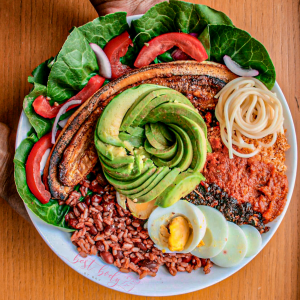
Source: Best body Africa
The European food lover is looking for unique experiences. The more authentic and real a destination is, the better. They like to experience the raw side of their destination, because it is very different from their own background. However, there is a limit to the extent to which these tourists actually want to experience this. Even though many tourists claim that they want to experience everything, this varies greatly between tourists. Therefore, it is important that the activity is tailored for the tourist and that they have the ability to skip certain parts which are considered too extreme.
Market segmentation
There are several sorts of tourists that can be distinguished within the food tourism segment but there are two main categories: broadly oriented food tourists and culinary/gastronomical tourists.
Broadly oriented food tourists
These tourists tend to search for many diverse and authentic food experiences but are rather price conscious. They are often adventure and cultural tourists as well and consist for a large part of gen Ys and Gen Zs. Their interest lies in cooking with locals, visiting food markets, trying street food, and discovering the various restaurants of a destination — from historical to new, and from family-owned to large chains — so that they can get an authentic glimpse into the destination and its cuisine. Broadly oriented food tourists offer the largest market.
Figure 4: a trip to the local rice paddies combines food with cultural emersion and some physical exercise
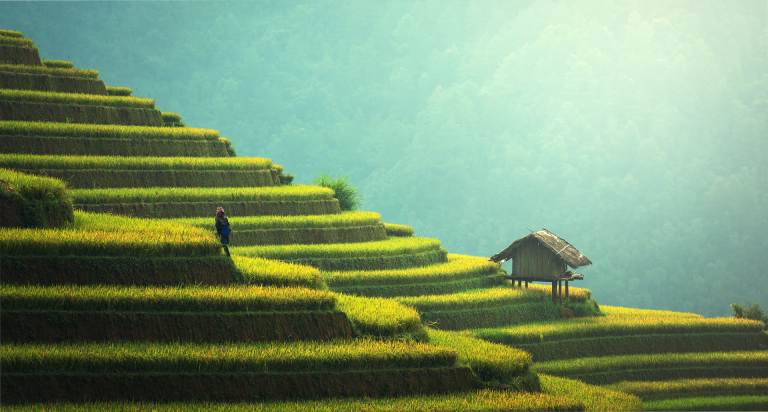
Source: pexels.com
The broadly oriented food tourist often has a high exposure to social media and other information sources. These tourists are encouraged more than ever to experience food travel. Orientation is especially done on social media and programs on both TV and the internet. One post on social media or promotion on other media can seriously raise the popularity of the destination and attract these travellers. Gen Ys and Gen Zs consider the fame or popularity of a food and drinks destination to be an important factor in choosing their destination. Furthermore, they enjoy experimenting with products from different cultures the most.
These tourists often choose to travel with their family and friends. Therefore, it should be made easy for casual groups of friends to participate in the experiences together. This means that one person of the party books the experience, but it should be made possible to split the bill among the travellers. One bill per table is an outdated policy according to these tourists. These travellers have an interest in social dining or meal sharing with other tourists. Breaking bread with strangers gives them the greatest opportunities to learn about other cultures and cuisines.
Sustainability is important to these tourists and they prefer tourism businesses who are environmentally and socially aware. This is expressed in tourists feeling ashamed of flying, eating less meat and they like to see their values and beliefs mirrored in the companies they visit.
- Ensure sustainability is incorporated in your business and communicate this to the visitors. It should be impactful and honest, as guests can be critical of companies who say they find sustainability important but don’t act accordingly. This can be done in many ways, such as offering local and vegetarian or vegan food, not using plastics or other disposables, or by making sure there is no waste and that any leftovers serve other purposes.
- Make sure you have a strong and wide digital portfolio, with photos, videos, stories and reviews. This will familiarise the tourist with the destination and creates trust. Read our article on how to be successful online for more tips.
- Do not offer your client a list of activities or restaurants but highlight special things for them as this creates the experience. For example, ask for their preferences and wishes and offer personalised recommendations for breakfast, lunch and dinner.
Culinary/gastronomical tourists
The culinary tourist is considered the more luxury-oriented and exclusive food tourist, who is willing to spend a lot on their food-loving activities. In general, these are people who are older than the broadly oriented food tourist and they have a higher education. These tourists are interested in doing other cultural activities besides their food activities, but mainly as a side activity, as people are not eating all day long. These tourists plan these other cultural activities around their food activities, as this is the main goal of their trip.
This group does not want to eat at a street food place but only settles for the more exclusive experiences. An example of this could be to eat at home with a chef and meet his parents. They prefer having a highly curated and inside experience that comes close to a VIP experience. However, just like the other group of food tourists, they find the story and the authenticity of the experience very important.
- Offer something truly unique and only focus on smaller groups when you target the culinary/gastronomical tourist, as this target group prefers exclusivity. Do not save too much on the costs incurred as everything has to be excellent in order to have a complete experience.
3. Which European countries offer most opportunities for food tourism?
The main source countries for food tourism in Europe are France, Germany, the United Kingdom, Italy, Spain and the Netherlands. These countries provide the highest numbers of travellers towards developing countries and they are relatively prosperous and well-educated, and therefore most interested in culinary tourism. When focussing on sustainable food tourism, Austria offers an interesting target market as well. Although Austria offers a relatively small market, Austria has the highest demand for sustainable food in Europe.
Food is rooted in the culture of many European countries. Because they are used to travelling, they are very used to experiencing food from different cultures. Europeans are often looking for parts of their own country in their destination country. Countries that have inherited food in their culture the most are France, Italy and Spain. Germany and the United Kingdom are huge source markets, and their tourists can be found all around the world. Tourists from the Netherlands are quite adventurous travellers, and therefore it is an excellent source country for novel projects.
As 34% of Germans plan their travel around where and what they eat and drink , food is a less important driver for travel compared to the French and British market. However, the relatively prosperous Germans are a great target group for offering sustainable food tourism activities. On average, they spend 16% of their travel expenditure on food . The local component is most important to German tourists when they think about sustainable food. Therefore, activities such as visiting farms, food festivals for locals and tourists combined, and visiting a local wine producer are appealing activities for German tourists.
63% pay attention to the impact of food choices on the environment , and 64% agree that sustainability concerns have at least some influence on their eating habits. Especially the more wealthy Germans will pay more attention to the sustainability of food production. While 22% is prepared to pay more for sustainable food, 33% of Germans is willing to spend more money on food for which they are sure that farmers get a fair price in return.
Looking at their tendency towards vegetarianism, 36% are willing to cut down on red meat. Germany is among the countries with the largest percentages of vegetarians (7%) in Europe. Together with Austria and the Netherlands, the Germans are most willing to replace meat with insect derivates.
Germany is one of the largest source markets for tourism globally; in 2019 55.2 million Germans took a trip of five days or more . Furthermore, 78.2% of the total population indicates they travel, and 74% of the trips taken go abroad. Germany accounts for the largest economy within the EU, with a GDP of over €3.1 trillion, and GDP per capita of around €42 thousand.
Germans have an ever-growing concern about the sustainability of holidays, as 73% feel at least a little guilty about climate consequences when they travel by air. Furthermore, 61% of German tourists feel positive towards sustainable trips, but only 6% are acting on it. This means there is still a large gap between the attitude and actual behaviour of these tourists.
Although the COVID-19 pandemic has caused a huge drop in outgoing travel in 2020, it also made German travellers even more eager to travel the world, as 62% of travellers have a heightened desire to see more of the world. 60% won’t take travel for granted in the future, which is about equal to the global average of 61%. The German vaccination rate is comparable to most other Western European countries, with 42% of the adult population being fully vaccinated by July 2021.
Hygiene safety measures are important for German travellers, but less important compared to other European countries. Only 51% of German travellers, compared to 70% globally, will book an accommodation if it is clear about health and hygiene policies. 47% of travellers accept health spot checks on arrival, which is much lower than the global average of 67%.
Table 2: German travellers’ long-haul destinations in 2019 compared to 2017
Source: Reiseanalyse , 2020 and 2018
With 39% of French tourists planning their travel around where and what they eat and drink , culinary activities are far more important for French tourists compared to German and British tourists. Their spending behaviour however is similar, as they spend 16% of their travel expenditure on food .
France has the second-largest population of the EU and it has a travel market that shows healthy growth. Total expenditure for outbound travel by French tourists in 2019 grew by 11.5% to over €45 billion, which was the largest growth of the mentioned source countries.
French tourists prefer to travel to countries where they can speak their own language, and that serve dishes that are from the French cuisine. These tourists are always looking for elements of their own country in other countries. A way to reach this target group is by incorporating French elements into the local dishes, especially if it is a French-speaking country. When they see ingredients or recipes they are familiar with, they tend to be more open to the food experience.
Although the COVID-19 pandemic has caused a huge drop in outgoing travel in 2020, it also made French travellers even more eager to travel the world. 45% of travellers have a heightened desire to see more of the world. 65% of travellers won’t take travel for granted in the future, which is about equal to the global average of 61%. 38% of the adult population was fully vaccinated by July 2021, which is less than most other Western European countries. Many French are sceptical about the COVID-19 vaccine.
Hygiene safety measures are relatively important for French travellers, compared to German and Dutch travellers. 64% of French travellers, compared to 70% globally, will book an accommodation if it is clear about health and hygiene policies. 66% of travellers accept health spot checks on arrival, which is comparable to the global average of 67%.
After the UK, France has the third-biggest GDP of Europe and the seventh-largest of the world, with about €2.3 trillion in 2019. Their population count is just over 65 million. Just like other European source countries, France saw a serious decline in their GDP in 2020. The average holiday budget has decreased from €2,201 in 2019 to €1,522 in 2020. This is comparable to the holiday budget of Germans.
United Kingdom
Out of the three largest source countries, Germany, the United Kingdom and France, the British consider food to be the most important when planning their travel, as 40% of the British plan their travel around where and what they eat and drink . On average, they spend 16% of their travel expenditure on food .
The United Kingdom is the second-largest economy in Europe and the fifth-largest in the world, with a GDP of €2.2 billion. Just like the Germans, people from the United Kingdom can be found all around the world as tourists, which makes them a good target group. As their native language, English, is considered a standard globally, there is a lower barrier to reach these tourists.
The duration of stays for these tourists has shifted in 2020 ; an increasing percentage of Brits stay for more than seven days at their destination, up to 14% in 2020 from 6% in 2019. British people are travelling alone more and more, the percentage of British tourists travelling solo is up from 16% in 2019 to 26% in 2020. The main interests among these tourists are still sampling local cuisines and exploring neighbourhoods.
Compared to other European source countries, British travellers are more demanding and assertive if their requirements are not met. In general, they will ask for a lot of information on possible activities.
The COVID-19 pandemic has made British travellers even more eager to travel the world, as 47% of the travellers have a heightened desire to see more of the world.
Hygiene safety measures are important for British travellers, compared to German and Dutch travellers. 68% of British travellers, compared to 70% globally, will book an accommodation if it is clear about health and hygiene policies. 63% of travellers accept health spot checks on arrival, which is comparable to the global average of 67%. The United Kingdom currently has the highest vaccination rate in Europe, with 50% of the adult population being fully vaccinated by July 2021.
Food and drinks are deeply integrated in the culture and tradition of this country; they are well known for their pizza, pasta and other classical Italian dishes. As food is well known to the Italians, they look for it in the destinations they visit as well. They are more likely to go to a local market or participate in a cooking class than other countries.
76% pays attention to the impact of food choices on the environment , and 75% agrees that sustainability concerns have at least some influence on their eating habits. While 28% is prepared to pay more for sustainable food, 35% of Italians are willing to spend more money on food for which they are sure that farmers get a fair price in return. Therefore, their willingness to choose sustainable food is among the highest in Europe.
Looking at their tendency towards vegetarianism, 45% is willing to cut down on red meat. This is the highest percentage in all European countries compared and is done primarily for environmental reasons. 6% of Italians are vegetarian , and 1% are vegan.
Italy counted 32.64 million people travelling outside of Italy , and is expected to grow in the coming years after the COVID-19 pandemic is slowed down. One of the main reasons for this growth is increased interest in travel and experiences, especially among Gen X and Gen Z who are exposed to a lot of information online. This is combined with a rising income among these travellers and a growing interest in exploration and the search for different cultural experiences. Important aspects for Italians when booking a trip are affordability and accessibility.
Just like the Spanish, the Italians prefer to book their travels via a tour operator and especially value a tailor-made holiday. Many Italians also tend to travel in larger groups, often with large (multi-generational) families, with an Italian-speaking guide. It is often hard to meet the needs of different family members with different wishes. Also, margins are generally lower for larger groups. However, their large group sizes offer some economies of scale.
The Italian vaccination rate is slightly lower than in Western European countries, with 37% of the adult population being fully vaccinated by July 2021.
Just like for Italians, food and drinks are a significant part of Spanish culture; they look at consumption of food and drinks as a socialising moment and they often eat with their whole family. This makes them also want to enjoy food and drinks at their destination with others, and they often travel together in larger groups, including families and friends.
70% pay attention to the impact of food choices on the environment , and 73% agree that sustainability concerns have at least some influence on their eating habits. While 23% are prepared to pay more for sustainable food, 32% of the Spanish are willing to spend more money on food for which they are sure that farmers get a fair price in return.
Spain is one of the countries with the lowest number of vegetarians. However, 33% are willing to cut down on red meat, which is comparable to most European countries.
Expenditure on outbound Spanish travel has increased by 55% in the period 2014–2019 , and after travel restrictions are over, this is expected to grow further. However, Spain has been badly affected by COVID-19 and the Spanish are the weariest of their health, compared to other countries. The average travel budget of Spaniards was €1,583 in 2020.
The Spanish have a high preference for Spanish-speaking guides and have a higher preference for buying with a tour operator, in comparison to the other countries in this top six.
The Spanish vaccination rate is relatively high: 44% of the adult population was fully vaccinated by July 2021.
Netherlands
Dutch tourists are often very adventurous and exploratory which makes them unafraid of discovering new places. They are a great target group when you offer something that is quite unique and novel, as these tourists are prepared to try it out. Dutch tourists associate sustainable food with fair revenue for farmers, as their population has a high concentration of farmers. If you’re aiming to attract Dutch tourists, make sure to show the connection of your product to the local farmers.
Only 52% pay attention to the impact of food choices on the environment , and 54% agree that sustainability concerns have at least some influence on their eating habits. While 13% are prepared to pay more for sustainable food, which is lower than most other European countries. 23% of the Dutch are willing to spend more money on food for which they are sure that farmers get a fair price in return. Overall, in comparison to the other European source markets, the Dutch are among the least willing to pay for sustainable food in Europe.
Looking at their tendency towards vegetarianism, only 31% are willing to cut down on red meat. However, the country has one of the largest percentages of vegetarians (7%) in Europe. Together with Austria and Germany, the Dutch are most willing to replace meat with insect derivates, which is in line with their adventurous nature.
The fear of violence, price, political stability and the chance of (COVID-19) infections are the most important drivers when choosing a destination. Over 75% of tourists mainly book their trips online. Dutch travellers don’t value luxurious accommodations but want to make the most out of their trips by being physically active.
The COVID-19 pandemic has made Dutch travellers even more eager to travel the world, as 26% of travellers have a heightened desire to see more of the world. 45% won’t take travel for granted in the future, which is below the global average of 61%. 44% of the adult population was fully vaccinated by July 2021, which is a bit higher than most Western European countries.
Hygiene safety measures are important for Dutch travellers, but less important compared to other European countries. Only 52% of Dutch travellers, compared to 70% globally, will book an accommodation if it is clear about health and hygiene policies. 50% of travellers accept health spot checks on arrival, which is much lower than the global average of 67%.
68% pay attention to the impact of food choices on the environment , and 64% agree that sustainability concerns have at least some influence on their eating habits. While 25% are prepared to pay more for sustainable food, 38% of Austrians are willing to spend more money on food for which they are sure that farmers get a fair price in return.
Looking at their tendency towards vegetarianism, 40% are willing to cut down on red meat. However, Austria has the largest percentage of vegetarians (7%) in Europe. Together with Germany and the Netherlands, Austrians are most willing to replace meat with insect derivates. Altogether, Austria is one of the countries with the highest emphasis on sustainable food choices, and therefore an excellent target market if your aim is to sell sustainable food travel.
With a population of almost 9 million, Austria offers the smallest source market. Austria’s GDP per capita is approximately €45 thousand, indicating that the Austrians also have disposable income to spend on holidays. German is the dominant language in Austria, but especially younger Austrians master English as well.
The Austrian vaccination rate is slightly lower than most other Western European countries, with 38% of the adult population being fully vaccinated by July 2021.
- Offer the information on your website in at least English, German and Italian, if your aim is to attract sustainable and culinary food tourists. With these countries, you cover the most important target countries regarding sustainable food tourism.
- Learn about the European values and standards if you want to attract European tourists, because they care about their standards being met. They expect to leave on agreed times, have clean accommodation, and having the table set the way Europeans do it. Developing organisational skills to run your business is important to accommodate European tourists. These skills can be developed through a training programme, for example.
- Read what the demand is for outbound tourism on the European market to learn about the travel behaviour of different European countries.
4. Which trends offer opportunities or pose threats on the European food tourism market?
Growing importance of sustainability.
Almost three quarters (72%) of travellers in 2019 agree that people must act now to save the world for future generations by making sustainable travel choices. This number is up from 62% in 2016, so the awareness that sustainability is needed has been growing over the past years and is expected to increase further in the coming years. This interest in sustainability trickles through in food tourism by means of sustainable food. Tourists prefer to eat organic food which is made by the local community and not by large food chains.
Sustainability is most popular among the younger generations. Younger generations stir up the discussions about climate change and social equality, but it won’t take too long before these generations are the largest source market and sustainability will be a prerequisite instead of a choice.
Most Europeans see sustainable food as food with a low environmental impact, avoidance of pesticide and local supply chains. Economic growth, animal welfare, fair revenue for farmers and health are less associated to sustainable food. The main barriers to eating more sustainably are the expense and a lack of information on how to do so. Therefore, many Europeans opt for sustainable choices, but only if prices are competitive and the information is clear.
Some tourists go beyond sustainability and prefer to participate in regenerative tourism. Whereas in sustainable tourism there is a focus on doing no harm, in regenerative tourism it is all about improving the destination.
Greater influence of social media on tourism
Social media posts are used to promote unique food and drink experiences. Travellers from generation Y and Z are growing to become the largest target group, and a very large percentage of these use social media. Another part of this new interest is fuelled by increased attention to food programs, both on TV as well as on online streaming services. When this target group is exposed to a destination, they can quickly gather more information on the internet and gain knowledge on local food and drinks before they travel.
With social media gaining influence on the food travellers’ destination choices, social media become increasingly important when attracting food tourists. Therefore, it is very important that your culinary products are promoted on Facebook, Instagram, Youtube and Twitter. It is best to provide a lot of information, using a combination of text, photos and video. Furthermore, it is important to connect to as many of your clients as possible, so your posts can be shared and liked by large numbers.
Vegans, vegetarians and flexitarians
Vegans, vegetarians and flexitarians are an ever-growing segment within food tourism as people start to reconsider the consequences of their consumption. Vegetarianism is a serious commitment for most people, which means that they are dedicated to following their diet. These tourists are very strict on selecting their food as it has to comply with their diet. Vegetarian and vegan tourists are looking on the internet and other sources for offerings that are suited to vegetarians and vegans. They are open to new experiences and meeting new people who are likeminded.
Next to attracting vegans and vegetarians, you’re also attracting their partners or travel companions, as they often choose to support them in their life choices and comply with their restaurant choices. As women have a higher tendency towards reducing meat, in many cases women are vegetarians while their partners are not. Furthermore, vegan tourism is also considered kosher and halal, so this will attract many more tourists as well.
Besides vegans and vegetarians, there are many flexitarians, who try to reduce meat, but sometimes do eat meat. Flexitarianism can vary between eating meat five times per week or eating meat once a month. Flexitarians are, by definition, not strict at all, and many will be convinced to eat meat to experience something new, or when it offers the opportunity to immerse themselves deeper into your culture. However, many flexitarians will feel a sense of guilt when eating (too much) meat. In some cases, their feeling of guilt can be stilled by emphasising that meat is produced locally and that animal welfare is taken care off.
Healthy or power food/diets
Health and a healthy lifestyle are becoming increasingly important in tourists’ decision making. Aging tourists, the lifestyle of Gen Y and Gen Z, a growing middle class, and the technological and digital revolution all contribute to the growing importance of the health trend. Concerns about obesity, food sensitivity, and people affected by diseases, have resulted in a shift in attitude towards health care, nutrition, beauty, physical activity, and overall self-improvement.
As a consequence, people begin to reconsider their past eating habits, also when travelling. Many people begin to reform their diet in a way that is much healthier. There is an increasing demand for food that is fresh, organic, nutritious and produced in a sustainable way.
Besides the information provided on a scientific basis on how to eat healthy, there is a growing number of Europeans that are inspired by other nutrition and lifestyle gurus as well. In addition, there is an increasing number of people who are restricted on their doctor’s advice due to allergies, intolerances or illness. This results in a growing number of travellers that have restrictive eating habits.
Examples of these restrictions are no meat, meat-only, gluten-free, peanut-free, lactose-free, kosher, halal, vegan, pescatarian, keto, paleo, raw-food, clean-eating (no additives), dietary approaches to stop hypertension (DASH) containing low sodium and high calcium, Mediterranean, and many more. In this blog by Social Tables you can find much more information on these restrictions .
- Consider getting international standards when providing sustainable tourism. These standards are well known to tourists around the world and can easily differentiate your business from the competition. An example of this is the ISO 21401 , which specifies environmental, social and economic requirements for sustainability practices.
- Provide multiple options on the menu when you target vegans or vegetarians. Vegetarians and vegans, just like other tourists, want to have a choice in what they eat. They do not consider it fair when you market vegan or vegetarian cuisine, but only offer one dish.
- Communicate what is in your meals by whatever means, this could be with a separate menu, listing the ingredients in dishes, or having specific signs that indicate it is vegan, vegetarian or gluten-free. As many tourists live on a strict diet, they have to be sure your meal meets their conditions. Communication is key in this matter.
- Combine healthy cuisine and other contributors to a healthy lifestyle, and package these together. Examples of these are outdoor exercise, new fitness programmes that are highly focussed on results, meditation and yoga, life coaching that embraces health aspects such as nutrition, empowerment and physical exercise. For more information, read our study on opportunities for wellness tourism .
This study was carried out on behalf of CBI by Molgo and ETFI .
Please review our market information disclaimer .
- Entering the European market for food tourism products
Enter search terms to find market research
Do you have questions about this research?
Ask your question
Food and drink – culinary culture – should be the foundation of every visitor experience, since all visitors eat and drink, but not all visitors go shopping, play sports or go to museums. Food-loving travellers seek unique and memorable products and experiences, not restaurant lists. And destination marketers and governments have a huge opportunity to turn both visitors and local residents into ambassadors of their areas by developing and promoting the special aspects of their area’s culinary culture. Erik Wolf, director of World Foodtravel Association
No matter where you are in the world, your culinary tourism strategy needs to be rooted in your unique selling points: the local dishes, producers and culinary experiences unique to your region. The farmers, the fishers, the foragers and the artisans who are crafting your food – those are your rock stars. Talk to them, celebrate what they are doing and help them share their stories through workshops, tours, tastings, et cetera. Culinary travelers want a truly authentic experience. If you build a tourist-first strategy, you’ll never get full buy-in and adoption. Focus on the locals, and the tourists will come. Eric Pateman , Global Culinary Tourism Strategist, Chef & Consultant at ESP Culinary Consulting
Webinar recording
26 October 2021
Related research
- What is the demand for outbound tourism on the European market?
- What trends offer opportunities or pose threats on the European outbound tourism market?
- What are the requirements for tourism services in the European market?
- (opens in a new tab) X
- (opens in a new tab) Facebook
- (opens in a new tab) LinkedIn
- Bahasa Indonesia
- Slovenščina
- Science & Tech
- Russian Kitchen
Gastronomy ecotourism: 5 organic farms to visit near Moscow
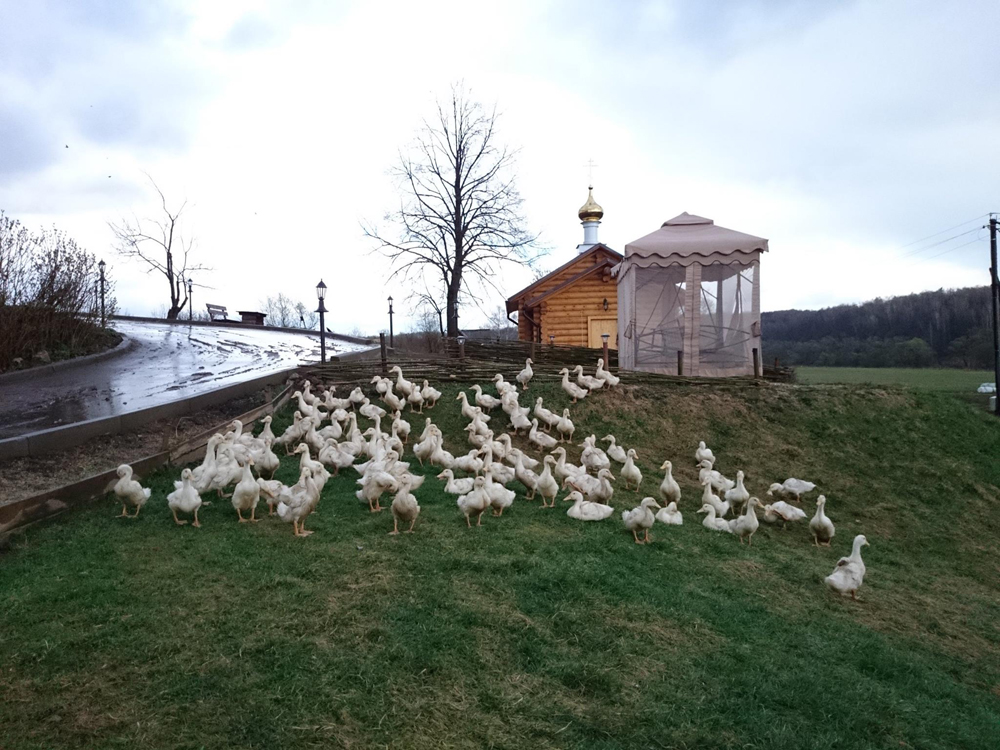
- Mark i Lev
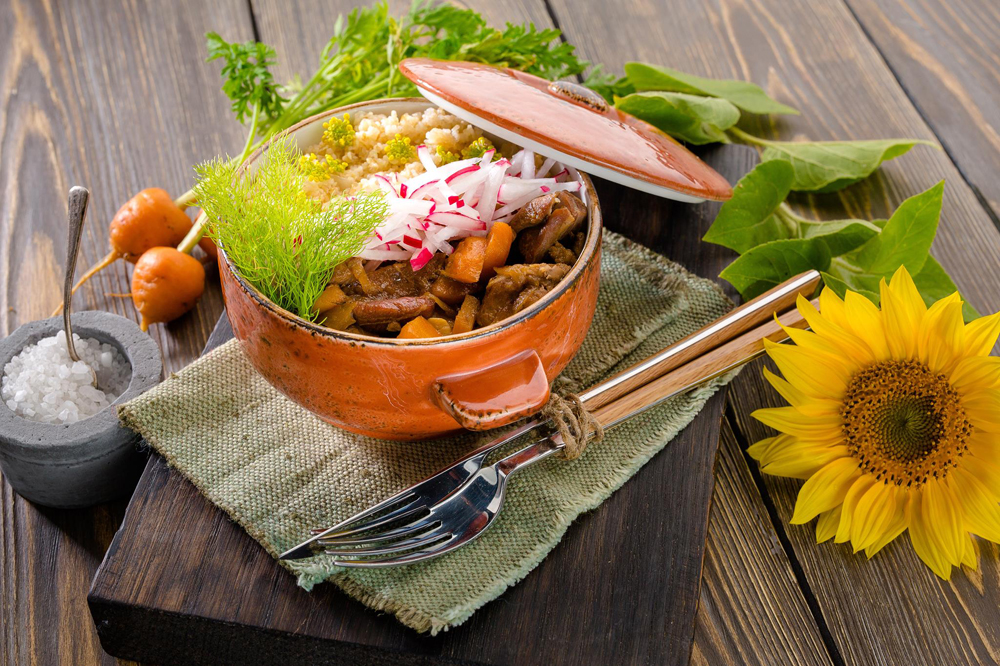
Where: Tula Region, 80 miles south of Moscow
At the first and only “locavore” restaurant in Russia – also a farm – local chef Mikhail Lukashonok prepares dishes using only ingredients grown within 100 miles of the restaurant and he himself cultivates vegetables and herbs in the garden.
You certainly shouldn’t miss the stroganina (cold slices, sashimi-style) of smoked goose breast with parsnip, goose pate with sea buckthorn and the plum pudding with wine sauce, prepared according to Leo Tolstoy’s family recipe. Don’t forget to try the polbianaya kasha (spelt porridge) with rabbit.
You can stay next to the farm at the Velegozh Park dacha hotel. Aside from testing the farm’s artisanal products, you can also go horse-riding, drive a quadbike or try your hand at some of the farm crafts yourself – for example, baking original rustic bread.
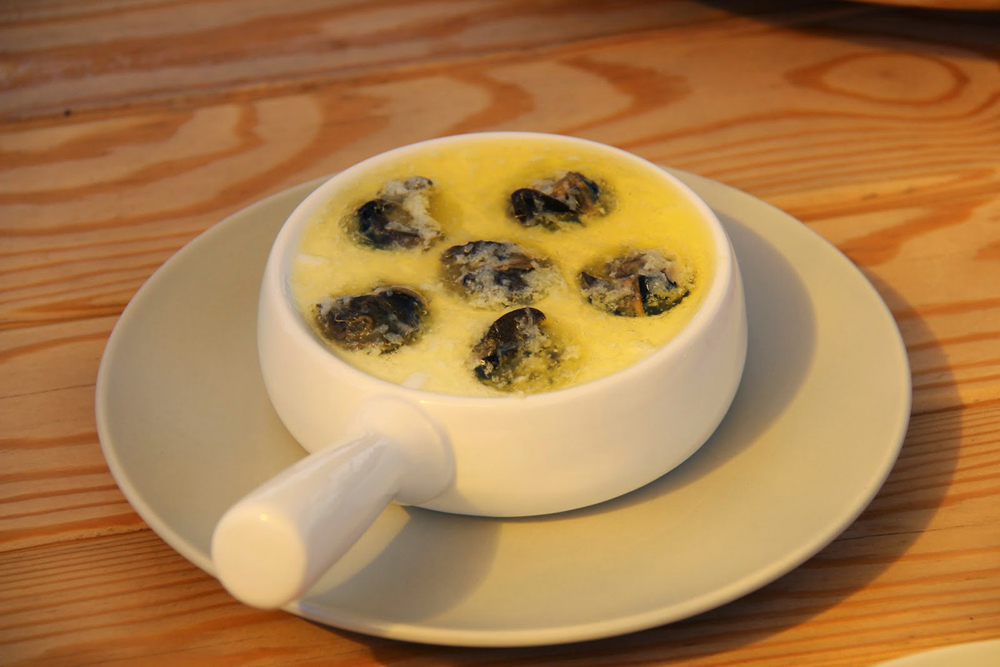
Where: Pereyaslavl-Zalessky, 90 miles northeast of Moscow
Ulitka is a small family agro estate on the bank of the picturesque Lake Pleshcheyevo. The farm specializes in growing snails ( escargots ) which you can observe before devouring this French delight.
The owners of the farm are willing to teach you how to cook escargot dishes and prepare homemade sausages, and can also offer you a taste of their freshly collected garden herbs. Culinary tables and workshops are frequently held here as well.
This place is best to visit in summer during “escargot season” when the snails are coming out of hibernation and are ready for consumption.
You can stay at the farm in separate houses for 3-4 people.
- Gorchichnaya Polyana (Mustard Glade)
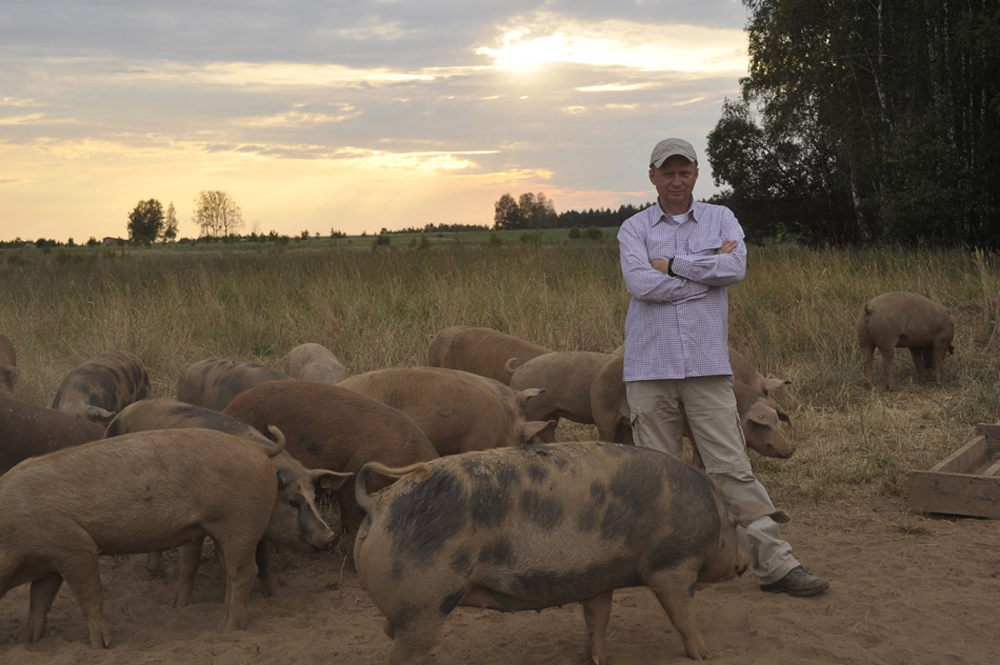
Where: Tula Region, 170 miles south of Moscow
This eco-farm specializes in meat products and all sorts of sausages, so vegetarians won’t exactly feel at home here. But everyone else will be able to try the original marbled meat, real bratwurst and sausages produced on site.
Here you will be offered seasonal vegetables, mushrooms and berries, all cultivated in the farm’s own garden.
The owners are ready to teach you how to milk a goat or a cow, bake homemade bread, collect honey from a beehive, and even explain you how to make eco-bratwurst.
- Kuznetsovo estate
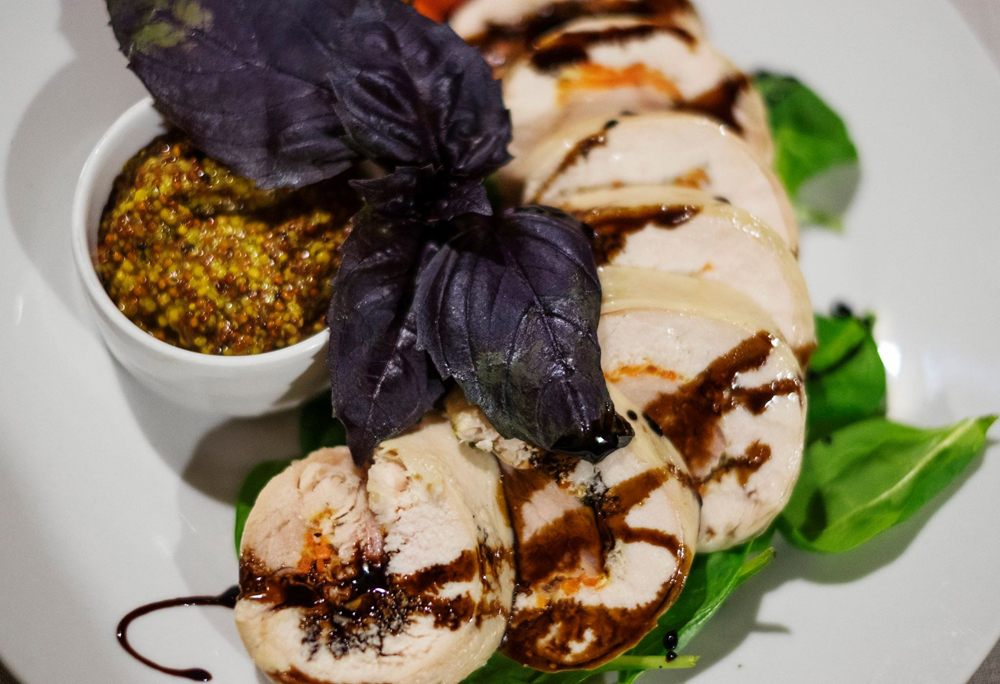
Where: Klin District, 70 miles northwest of Moscow
This is a recreation center with two-storey cottages. Besides cows, on the estate there are also Arabian horses, donkeys and even camels.
Among the farm products which you can try here there are goat cheese, bread baked in a Russian stove, and samogon (homebrewed vodka) from oaken barrels, served at the table alongside goose, quail and rabbit.
After a hearty lunch you can ride a horse, donkey, or camel on the estate or take a quadbike for a drive on the obstacle course, and even do some catamaran rafting on the Nudol river. Not far from the estate there are very picturesque places for fishing.
5. Lukino compound
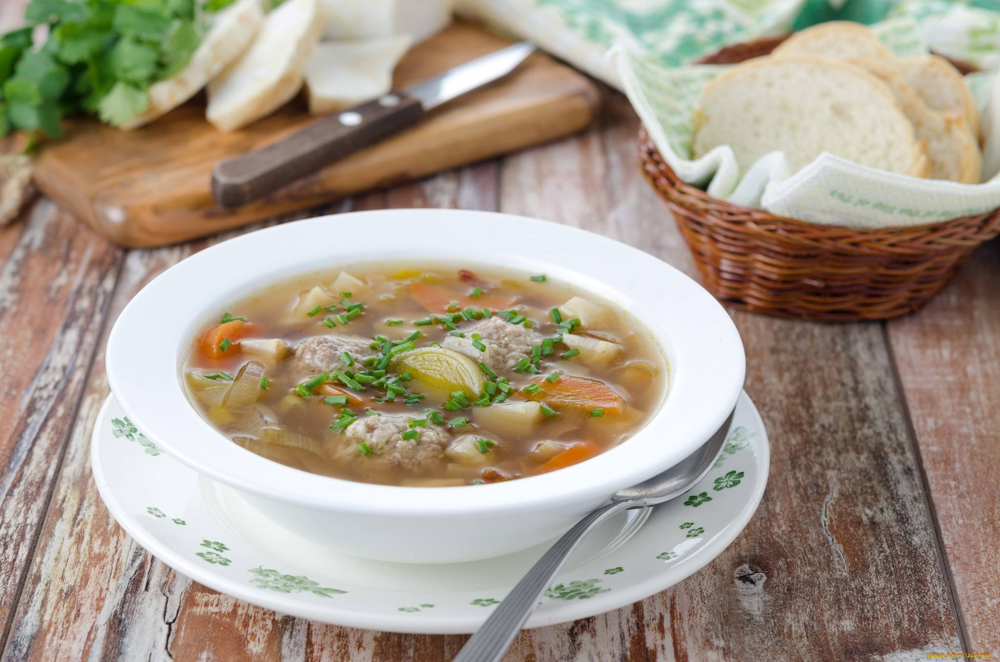
Where: Tula Region, 85 miles south of Moscow
At Lukino you can stay with your friends or family in a 4-6 person wooden house and enjoy the domestic fowl, fishing and Russian banyas. Or you can try your hand at farming and join your hosts in milking the cows, making hay for the fall and doing some work in the fields.
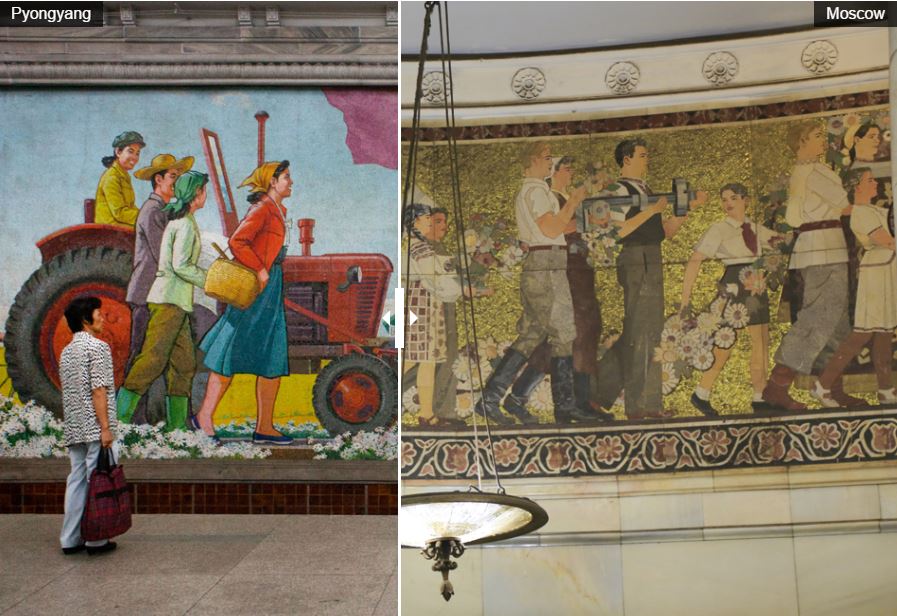
The farm owners guarantee you a great appetite by the evening, especially taking into consideration that all the produce grown here is organic.
All the necessary farming equipment is provided here at the compound.
All rights reserved by Rossiyskaya Gazeta.
to our newsletter!
Get the week's best stories straight to your inbox
This website uses cookies. Click here to find out more.
+30 210 9793539 +30 6940271732 [email protected]
- Destinations
Wineries & Gastronomy

It is said that the best way to know a place and its people is through their eating habits - and we believe the same! According to a survey of World Tourism Organization, one third of the total budget of a typical tourist is spent on food. Depicting a nation's true identity and history, gastronomy is one of the new trends in travelling - and, truly, Gastronomy Tourism has gained a huge fan base during the past years. Its "subcategory" of Eno Tourism, focused mainly on wine producing and wine tasting, has also its own supporters, and both of the categories have contributed a lot to the local economies, due to the income from travellers who crave trying local, fresh products right from their source.
Gastronomy is a highly appreciated value by tourists, while local delicacies and beverages are, quite often, a crucial factor of trip planning for a great percentage of visitors. Aware of the importance of this fact, we support the mentality of offering a full-round experience to our customers and offers a range of gastronomy and wine tasting services. Carefully designed and based on high standards, our tours are planned to attract every individual who wish to experience the local culture by learning the gastronomy traditions of each destination. With the support of local producers in each destination and highly motivated to offer the most professional services possible, our gastronomy and wine tasting tours are considered to be one of our strong assets in our portfolio.
Los Angeles
Our newsletter.
Please enable the javascript to submit this form


- GTBB Supporters Board
- Certifications & Honor titles by GTBB
- Business Glossary GTBB
- Global Branding Services
- Upcoming Events
- Past Events
- Authentic Taste of Greece | Awards
- Authentic Greek Cuisine | Awards
International Center of Wine and Gastronomy (ICWAG)
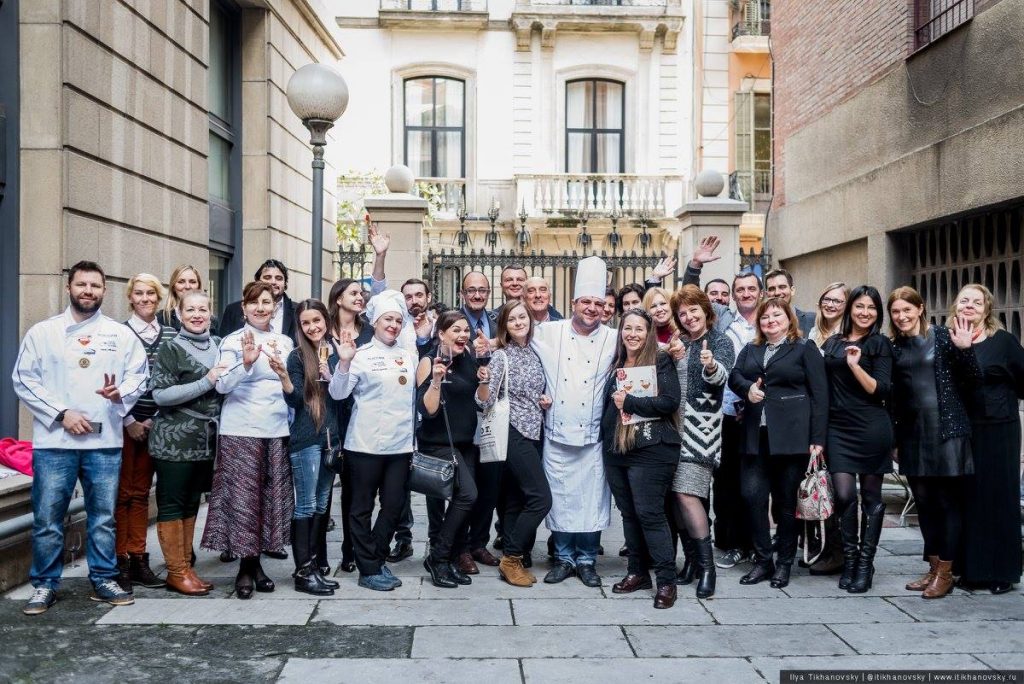
Description
International Center of Wine and Gastronomy (ICWAG) was founded in 2007 in Moscow (formerly «Autonomous enogastronomic University»). The idea of the Centre foundation belongs to Leonid Gelibterman, its President, the international expert with more than twenty years of experience in the market of alcoholic beverages, food and service industry.
The main concept of the ICWAG is connected with the implementation of programmes aimed at the improving of both professional and general level of gastronomic culture in Russia, and also with the realization of large-scale international projects in the field of gastronomy tourism.
LEONID GELIBTERMAN IS CERTIFIED WITH THE "AMBASSADORS OF TASTE FOR THE GLOBAL GASTRONOMY 2019"

You May Also Be Interested In
Le monde - institute of hotel & tourism studies, le monde is an institute of international standing in tourism, hospitality and gastronomy, certified member….
- +30 210 4830500
UN Tourism | Bringing the world closer
- All Regions
Wine Tourism – a growing tourism segment
Share this content.
- Share this article on facebook
- Share this article on twitter
- Share this article on linkedin
PR No. : PR 16062
The link between wine tourism and culture, history and lifestyle and the contribution of this segment to the development of the sector has been widely discussed during the 1st UNWTO Global Conference on Wine Tourism held in the Kakheti region in Georgia. During two days (7-9 September) the event convened over 200 participants including policy makers and tourism experts from nearly 50 countries.
“Wine tourism is intimately related to the identity of destinations and comprises cultural, economic and historical values. Furthermore, it constitutes a major driver in diversification strategies helping destinations to enrich the touristic offer and to attract different publics. This Conference tries not only to emphasize these but also to promote exchanges and to build cooperation among destinations with a potential in this field,” said UNWTO Secretary-General Taleb Rifai at the opening of the Conference.
“The Conference highlights one of the most cherished and eldest traditions of our culture. Wine and wine-making is an integral part of our history and identity, and has become the key element in the nation’s brand image. With this, the opportunity to host the 1st UNWTO Global Conference on Wine Tourism has once again placed Georgia in the hearts of the world’s wine experts, professionals and enthusiasts,” said Dimitry Kumsishvili, First Vice Prime Minister, Minister of Economy and Sustainable Development of Georgia.
Particular interest was raised by the presentation of the UNWTO Wine Tourism Prototype, a tool developed by the Organization that introduces an innovative methodology to identify the existing correlative relationship of the wineries and their surroundings. This includes their influences on local and regional history, socio-economics and culture. This relationship created the framework for a product to experience Spain through its wineries and the environment in which they have developed. As Yolanda Perdomo from the UNWTO Affiliate Members Programme explained “this methodological tool that can be adapted and replicated in different regions will help destinations to be promoted through their oenological framework that will also help emphasize other aspects such as culture, history and tradition.”
As an outcome of the Conference, the Georgia Declaration on Wine Tourism identifies a number of recommendations to facilitate the development of wine tourism that would help destinations to implement key actions.
“Wine tourism is a growing segment in continuous update that offers an extraordinary diversity to the consumer as well as business opportunities to producers,” said Gustavo Santos, Minister of Tourism of Argentina where the next Wine Tourism Conference will be held in 2017 (Mendoza province, second week of November).
Additional information:
Official Webpage of the event
Programme of the Conference
UNWTO Wine Tourism Prototype
Georgia Declaration on Wine Tourism
UNWTO Affiliate Members Programme
UNWTO Media Officer Rut Gomez Sobrino Tel: (+34) 91 567 81 60 / [email protected]
UNWTO Communications & Publications Programme
Tel: (+34) 91 567 8100 / Fax: +34 91 567 8218 / [email protected]
Related Content
Kingdom of morocco wins high-level vote to host next wo..., tourism has ‘life-changing potential’ - world tourism o..., the world tourism organization and globalia launch the ..., world tourism organization general assembly opens with ....

IMAGES
COMMENTS
Gastronomy and wine tourism represents an opportunity to revitalize and diversify tourism, promote local economic development, involve many different professional sectors and bring new uses to the primary sector. ... These examples show how gastronomy tourism has been turned into a development tool, inclusion and regional integration in Japan ...
"Through various successful examples of gastronomy tourism in Japan, this report shows how the country has achieved turning gastronomy tourism into a tool for development, inclusion and regional integration." ... Gastronomy and Wine Tourism. UNWTO Communications Department. Tel: (+34) 91 567 8100 / Fax: +34 91 567 8218 / [email protected] ...
For example, Hall and Mitchell (2006) define wine tourism and gastronomic tourism as two (separate but related) subsets of food tourism. In any case, it is clear that a relation exists ...
Start with globally recognized wine powerhouses. France's Bordeaux region, famed for its bold red wines and the biannual "Bordeaux Fête le Vin" wine festival, provides a classic wine tourism experience. The Burgundy region is another prized destination for its highly sought-after Pinot Noir and Chardonnay wines.
Gastronomy tourism, or "food tourism" as it's often called, is a growing trend where the main attraction is—you guessed it—food and drink. Forget just grabbing a quick bite to eat; this type of holiday is all about diving into the local food scene. Whether it's wine tasting in France, enjoying a seafood feast in Greece, or taking a ...
Gastronomy. Gastronomy is about much more than food. It reflects the culture, heritage, traditions and sense of community of different peoples. It is a way of promoting understanding among different cultures, and of bringing people and traditions closer together. Gastronomy tourism is also emerging as an important protector of cultural heritage ...
Gastronomy is today playing an increasingly significant role in wine tourism. It is in effect a complement to both tangible factors, such as cheeses, cold-meats, and desserts and intangible factors via verbal communication around food and drink which accompanies recreation projects and the tourism experience, an infrequent activity in an unfamiliar environment.
Gastronomy, Food and Wine Tourism Defined. Gastronomy is the reflexive analysis of what we eat. Food tourism can be defined as visitation to primary and secondary food producers, food festivals, restaurants and specific locations for which food tasting and/or experiencing the attributes of specialist food production regions are the primary motivating factors for travel.
Food and wine tourism is suggested as sharing some of the features of cultural tourism and is described as a type of integrated cultural tourism embracing food, wine, social history and heritage. It is proposed that using food and wine it is possible to develop the experience of tourism from elementary or middle school trips, showing the ...
Abstract: The Guidelines for the Development of Gastronomy Tourism have been developed by UNWTO and the Basque Culinary Center (BCC), a UNWTO affiliate member, as part of its long-term collaboration. The guidelines aim to serve as a practical toolkit to support the development of gastronomy tourism in destinations by providing recommendations on key aspects such as planning and management by ...
The Guidelines for the Development of Gastronomy Tourism have been developed by UNWTO and the Basque Culinary Center (BCC), a UNWTO affiliate member, as part of its long-term collaboration. The guidelines aim to serve as a practical toolkit to support the development of gastronomy tourism in destinations by providing recommendations on key aspects such as planning and management by national ...
Some example of "edutainment" wine tourism are: blending session, harvesting workshop, vineyard nature walks, cooking class…. "Disneyland" wine tourism, consisting in big budget projects, often with mixed contents also including contens not directly related to wine. This is the case of special restaurants or hotels, wine museums, etc
The high food quality—for example, "all food was extremely fresh"—and its tastiness—for example, "delicious tastes of Portuguese food"—was frequently praised, as was the variety of local dishes: ... food & wine tourism, the tourist experience, rural tourism and creative tourism. Elisabeth Kastenholz is Associate Professor at the ...
It is related to all activities that use food as a means of connection between people, places, and time. Food tourism is composed of activities that provide experiences of consumption and appreciation of food and beverages, presented in such a way that values the history, the culture, and the environment of a particular region. Food'n Road.
Visit Fairs and Local Markets. A classic example of a food tourism activity. Visiting markets and fairs are an excellent way to try ingredients and learn about the region's biodiversity while interacting with producers and the local community. Visits can be made independently or guided.
In a nutshell, wine tourism is a type of food tourism aimed at getting to know and appreciate the universe of wine. The routes and tours are focused on a single objective: get to know regions dedicated to wine production and taste their wines. This type of food trip is designed for people looking to delve into the history, traditions, and ...
A major component of history, tradition and identity, gastronomy has also become a major motivation to visit a destination. According to the 2nd UNWTO Report on Gastronomy Tourism, this tourism segment "offers enormous potential in stimulating local, regional and national economies and enhancing sustainability and inclusion".
Gastronomy (solid and liquid foods-making) have become the key element in the Nation's brand image representing an integral part of its history and identity. Currently 85% of the tourist's purchasing decision is centered on the gastronomic experience. GWTO Gastro & Eno TOURISM WORLD NETWORK HUB made up by public entities, associations, private companies and academic institutions.
Food & Wine's Editorial Guidelines Updated on December 6, 2023 Culinary tourism has boomed in recent years, topping $805.9 billion globally in 2022 — and it's expected to keep growing.
Here's how you can segment the types of wine tourists: The Wine Geeks: Want to know everything. Wine is the sole purpose. The Gastro-Tourist: Food and wine is an important element. The Passing ...
The Guidelines for the Development of Gastronomy Tourism have been developed by UNWTO and the Basque Culinary Center (BCC), a UNWTO affiliate member, as part of its long-term collaboration. The guidelines aim to serve as a practical toolkit to support the development of gastronomy tourism in destinations by providing recommendations on key aspects such as planning and management by national ...
It is sometimes referred to as culinary tourism or gastronomy tourism, and wine and other beverages are included within the definition. Food tourism is a segment of the wider section cultural tourism and 60% of the food tourists are interested in participating in other cultural activities as well. ... Example: Food festivals: The Eat drink ...
Ecotourism is finally hitting its stride in Russia. RBTH introduces you to five farms within 200 miles of Moscow that welcome guests and whose rustic specialties can be tasted in the bosom of ...
According to a survey of World Tourism Organization, one third of the total budget of a typical tourist is spent on food. Depicting a nation's true identity and history, gastronomy is one of the new trends in travelling - and, truly, Gastronomy Tourism has gained a huge fan base during the past years.
Description. International Center of Wine and Gastronomy (ICWAG) was founded in 2007 in Moscow (formerly «Autonomous enogastronomic University»). The idea of the Centre foundation belongs to Leonid Gelibterman, its President, the international expert with more than twenty years of experience in the market of alcoholic beverages, food and ...
In the last decade, wine tourism has become a key component of gastronomy tourism and a pillar in the strategies of diversification of many destinations. The event was a unique opportunity to discover the richness of local Georgian culture and to exchange innovative ideas to promote wine tourism between destinations already experienced in wine ...